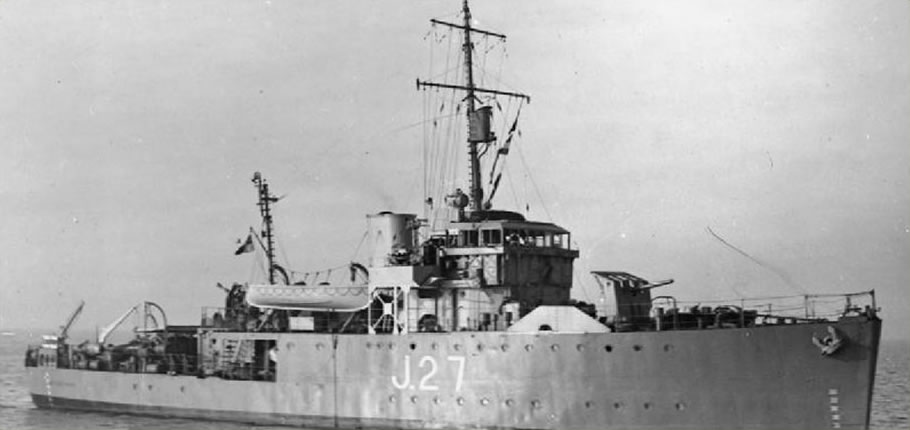
Minesweepers – World War 2
Among the Naval services rendered to Great Britain and the Allies during World War II, none were more conspicuously important than the work of British minesweepers and minelayers. The mine-sweeping has been described by those who should know as having been the hardest service in the North Sea during the war.
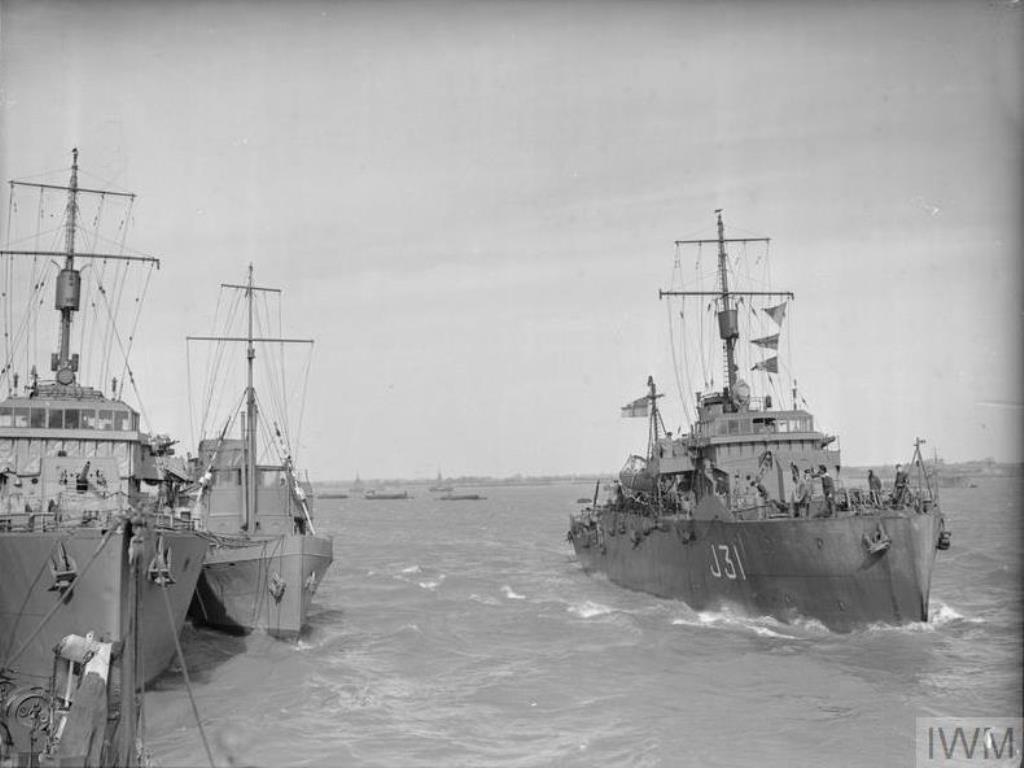
Minesweepers at Harwich.
The first mine-sweeper operation performed by the Harwich force was the establishment of the War Channel suitably furnished with lighted buoys, which the Harwich area began due east of the cork lightship 1.5 miles West of Shipwash Bank. The first mine casualty in the area came just one week after the start of the war when on September 10th the ss Magdapur sank close inshore of Thorpeness.
The Harwich Sub-Command under the overall command of Nore came the vessels of Coastal Forces, of combined operations, destroyers, mine-sweepers of all types, submarines and miscellaneous craft of many kinds, it is as a mine-sweeping base at Harwich itself was pre-eminent during the war years, with some of the finest mine-sweeper flotillas of the Royal Navy operating from its quays and harbour.
HMS Acute
- Type. Minesweeper
- Class. Algerine
- Pennant. J106
- Builder. Harland & Wolff
- Speed. 16.5 Knots
- Ordered. 15/11/1940
- Laid Down. 24/07/1942
- Launched. 14/04/1942
- Commissioned. 30/07/1942
- Fate. Scrapped 20/11/1964
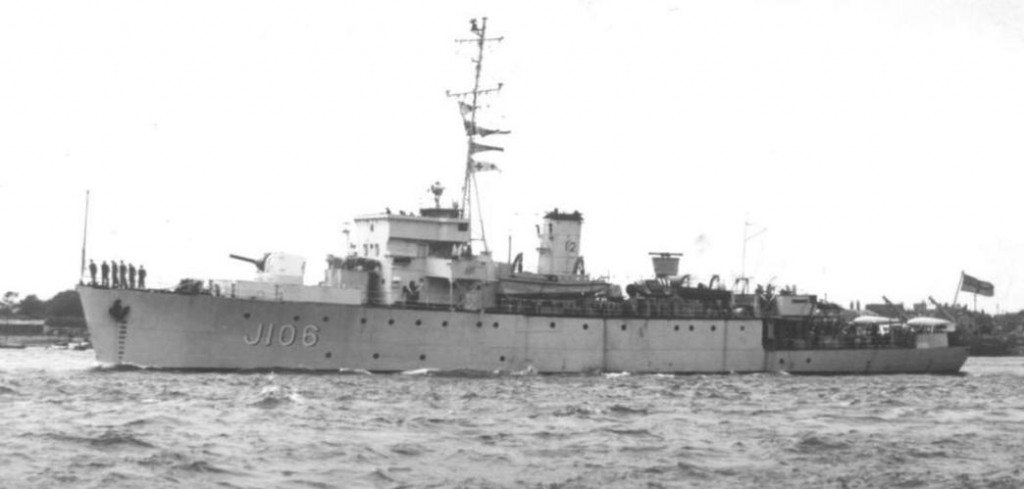
HMS Acute
HMS Acute was an Algerine Minesweeper launched on the 14th April 1942, ordered as HMS Alert but renamed in 1941 and Scrapped on the 20th November 1964.
HMS Alarm
- Type. Minesweeper
- Class. Algerine
- Pennant. J140
- Builder. Hawthorn Leslie
- Speed. 16.5 Knots
- Ordered. 15/11/1940
- Laid Down. 15/03/1941
- Launched. 05/02/1942
- Commissioned. 18/05/1942
- Fate. Scrapped 02/01/1943

HMS Alarm
HMS Alarm was an Algerine Class Minesweeper launched on the 05th February 1942 at Harland & Wolff. History: 1942. July Passage to Harwich to join HM Minesweepers, Bombed by German aircraft off Bone on 2 January 1943 and declared a Constructive Total Loss. Sold to be broken up for scrap in December 1943.
HMS Albacore
- Type. Minesweeper
- Class. Algerine
- Pennant. J101
- Builder. Harland & Wolff
- Speed. 16.5 Knots
- Ordered. 15/11/940
- Laid Down. 24/07/1941
- Launched. 02/04/1942
- Commissioned. 16/06/1942
- Fate. Scrapped 09/09/1963
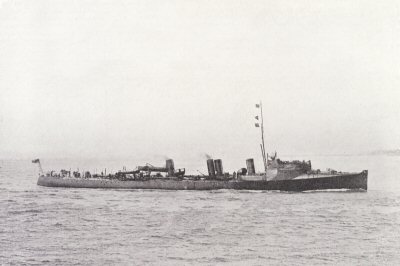
HMS Albacore
HMS Albacore was a Algerine class minesweeper, launched 2nd April 1942 by Harland & Wolff. History: 1942 August Passage to Harwich to join 9th Minesweeping Flotilla, Pending formation of new Flotilla. Albacore remained in the Mediterranean with the 12th Flotilla after VJ Day and was refitted in Malta during December 1945. On completion in February she resumed mine clearance based at Genoa. She sailed from Malta with the rest of the Flotilla on 12th April that year and had a further refit at Chatham in May. In June the ship carried out mine clearance in Home waters off the east coast, in the Channel and off the coast of Holland. The Flotilla was then withdrawn from service, but this minesweeper was retained for further deployment after a refit at Portsmouth. Her final duties were to take part in the destruction of German fortifications at Heligoland, Operation Big Bang with other RN ships in April 1947 and later to carry out further mine clearance based at Cuxhaven. She Paid-off in October 1947 and was reduced to Reserve status at Chatham, Placed on the Disposal List in 1962 she was sold to Bisco for breaking-up by Messrs Cordron and arrived for demolition at Port Glasgow in tow on 9th September 1963.
HMS Albury
- Type. Minesweeper
- Class. Hunt
- Pennant. J41
- Builder. Ailsa Shipbuilding
- Speed. 16 knots
- Ordered. 1917
- Laid Down. 1918
- Launched. 21/11/1918
- Commissioned. 17/02/1919
- Fate. Sold 13/03/1947
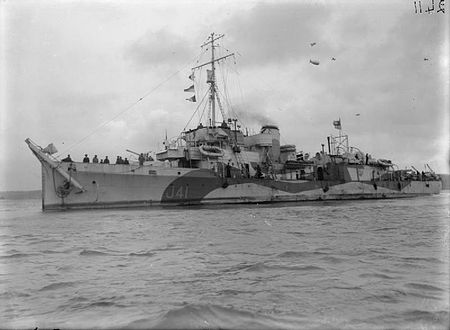
HMS Albury
HMS Albury was a Hunt-class minesweeper, On 19 January 1942 she was involved in a collision with HMS Sutton, another Hunt-class minesweeper, and took serious damage. Albury took part in the Dunkirk evacuation, Operation Dynamo.
HMS Algerine
- Type. Minesweeper
- Class. Algerine
- Pennant. J213
- Builder. Harland & Wolff
- Speed. 16.5 Knots
- Laid Down. 15/03/1941
- Launched. 22/12/1941
- Commissioned. 24/03/1942
- Fate. Sank 15/11/1942
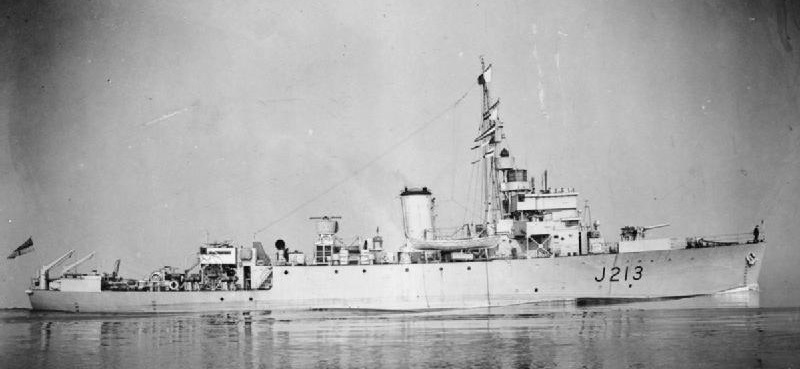
HMS Algerine
HMS Algerine was a Algerine class minesweeper launched 22nd December 1941 by Harland & Wolff. Around 0345 hours on 15 November 1942 HMS Algerine was torpedoed and sunk off Bougie, Algeria by the Italian submarine Ascianghi. The minesweeper was taking part in Operation Torch and had been tasked with clearing Bougie Roads from Axis mines, mission which was accomplished successfully with the destruction of 46 mines. Ascianghi had sailed from Trapani on the 9th for the Bougie area: at 0339 hrs the boat, which had moved to an area closer inshore, spotted a formation of 3 warships’s, initially identified as a cruiser escorted by 2 destroyers, and closed to attack. The submarine fired 2 torpedoes aimed at the second vessel in the line and missed, then turned and at 0346 hrs fired a second 2-torpedo salvo, this time against the tail unit. The submarine disengaged without suffering any reaction and reached Napoli safely on the 18th. 32 survivors were rescued by HMS Cadmus and taken to Bougie. Of these 32 survivors 24 later died due to internal wounds caused by the detonation of the minesweepers own depth charges, which detonated at their pre-set depth. The remaining 8 survivors were on a carley raft and thus were not wounded when the depth charges exploded.
HMS Appleton
- Type. Minesweeper
- Class. Ton
- Pennant. M1106
- Builder. Goole Shipbuilding
- Speed. 15 Knots
- Ordered. 1952
- Laid Down. 1952
- Launched. 24/09/1952
- Commissioned.
- Fate. 1972
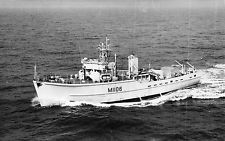
HMS Appleton
HMS Appleton was a Ton class minesweeper launched on the 24th September 1952 by Goole Shipbuilding she Sailed from Harwich with 105 & 108 Coastal Minesweeper Squadrons plus 2 inshore minesweeper squadrons and Mull of Galloway. The Ton class were coastal minesweepers built in the 1950s for the Royal Navy, but also used by other navies such as the South African Navy and the Royal Australian Navy. They were intended to meet the threat of seabed mines laid in shallow coastal waters, rivers, ports and harbours.
HMS Asheldham
- Type. Minesweeper
- Class. Ham
- Pennant. M2604
- Builder. Philip & Son
- Speed. 14 knots
- Ordered.
- Laid Down.
- Launched. 09/09/1953
- Commissioned.
- Fate. 01/04/1959
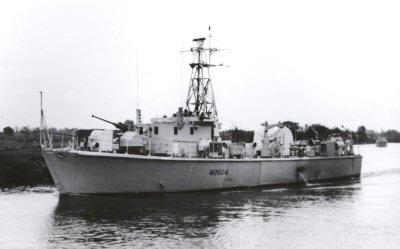
HMS Asheldham
HMS Asheldham was a member of the first series of Ham-class minesweepers, built by Philip and Son of Dartmouth, Devon and was completed on 9 September 1953. Asheldham served as part of the 232nd Mine Sweeper Squadron at Harwich in Essex from 1954 to 1956, after which it was placed into reserve. The Ham class had proved too small to carry modern minesweeping equipment and most of the class were withdrawn from use or transferred to secondary roles. The ship was transferred to the Royal Malayan Navy on 1 April 1958.
HMS Bangor
- Type. Minesweeper
- Class. Bangor
- Pennant. J00
- Builder. Harland & Wolff
- Speed. 16 knots
- Ordered. 12/07/1939
- Laid Down. 19/09/1939
- Launched. 23/05/1940
- Commissioned. 07/11/1940
- Fate. Scrapped 1961
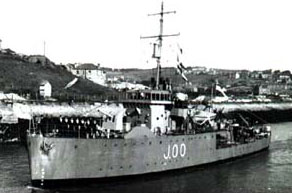
HMS Bangor
HMS Bangor was a Bangor class minesweeper, launched 23rd May 1940. History: 1941 December Transferred to Harwich with Flotilla for special mine clearance off East Coast with ships of 13th Minesweeping Flotilla On arrival carried out joint minesweeping operations to provide two gaps through British East Coast Mine Barrier and a known German minefield for use by allied destroyers requiring speedy access to North Sea from Harwich. HMS Bangor remained in commission after VJ Day and continued mine clearance duties in Bristol Channel area until July 1946 when she was paid off and reduced to Reserve status. This minesweeper was sold to Norway later in 1946 and was renamed HM Nor. S. Glomma. She remained on the Active List of the Royal Norwegian Navy until 1st January 1961 when stricken and later sold for demolition.
HMS Bassingham
- Type. Minesweeper
- Class. Ham
- Pennant. M2605
- Builder. Vosper & Company
- Speed. 14 knots
- Ordered. 1951
- Laid Down. 1952
- Launched. 24/06/1952
- Commissioned.
- Fate. Scrapped 1980
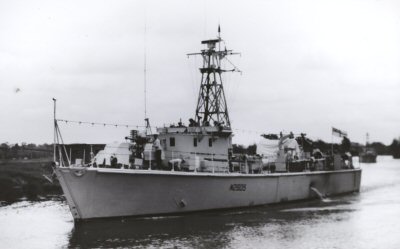
HMS Bassingham
HMS Bassingham was one of 93 ships of the Ham-class of inshore minesweepers. She was built by Vospers Ltd. of Portsmouth; she was 32.5 metres long overall by 6.4 metres beam. Jane’s and the Bassingham website are not consistent about the building material. Jane’s says the Ham class, numbered in the 2601 series was of wood. In December 1954 she joined the 232nd Minesweeping Squadron of the Inshore Flotilla based at Harwich. In 1956 Bassingham sailed to the Mediterranean Sea to take part in operations in Egypt during the Suez Crisis. Subsequently she was transferred to the Royal East African Navy, based in Mombasa, Kenya. After two years, she returned to Royal Navy service. She was eventually sold to Pounds shipbreaking yard in Portsmouth in 1966, remaining there for the next 14 years, being used to provide spare parts for other ships of her class until she was broken up in late 1980.
HNMS Beveland
- Type. Dutch Minesweeper
- Class. Dutch
- Pennant. FY237
- Builder. Rowhedge Iron Works
- Speed. 14 knots
- Ordered. 19/01/1942
- Laid Down. 1942
- Launched. 09/01/1943
- Commissioned. 12/04/1943
- Fate. Stricken 1956
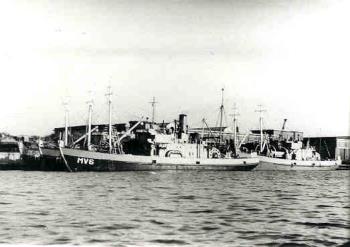
HNMS Beveland
HNMS Beveland was a Dutch Motor Minesweeper built by Rowhedge Iron Works, Wivenhoe, and commissioned 12th April, 1943. Served with 139th Dutch Minesweeper Flotilla at Harwich 1943/45. Beveland was built of timber with a ‘LL’ magnetic mine sweep, an ‘SA’ acoustic mine sweep, twin mounted 20mm Oerlikon Cannon and 2 x 0.303 machine guns. She was capable of a speed of 10 knots and had a crew of 20 men. From 2nd November to 24th November 1944, together with other Dutch minesweepers they took part in Operation Calendar. During Operation Calendar they cleared ground and 38 were 229 anchored naval mines in the Western Scheldt. The ship survived the Second World War and remained until 1956 in Dutch service, where the mines carried out operations in the Dutch coastal waters wipe. After imminent decommissioning, the ship was in 1957 on loan to the Netherlands Zeekadet Corps .
HMS Blackpool
- Type. Minesweeper
- Class. Bangor
- Pennant. J27
- Builder. Harland & Wolff
- Speed. 16 Knots
- Ordered. 12/07/1939
- Laid Down. 19/09/1939
- Launched. 04/07/1940
- Commissioned. 03/02/1941
- Fate. Scrapped 1961
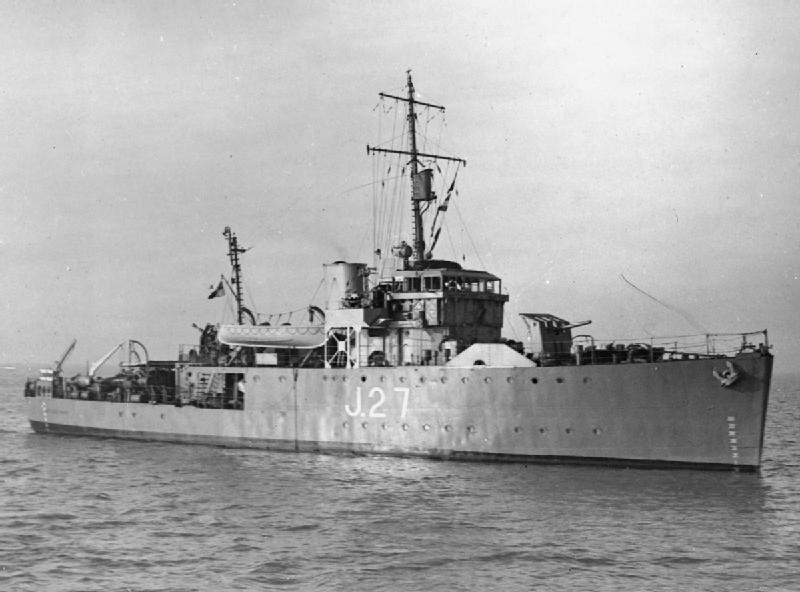
HMS Blackpool
1941 December. transferred to Harwich with Flotilla for special mine clearance off East Coast with ships of 13th Minesweeping Flotilla. HMS Blackpool remained in commission after VJ Day and continued mine clearance duties in Bristol Channel area until July 1946 when she was Paid off and reduced to Reserve status. sold to Norway later in 1946 and was renamed HMNorS Tarna. She remained on the Active List of the Royal Norwegian Navy until 1st May 1961 when stricken and later sold for demolition .
HMS Blaxton
- Type. Minesweeper
- Class. Ton
- Pennant. M1131
- Builder. Thornycroft
- Speed. 15 knots
- Ordered. 1954
- Laid Down. 1955
- Launched. 21/06/1955
- Commissioned.
- Fate. Scrapped 1987
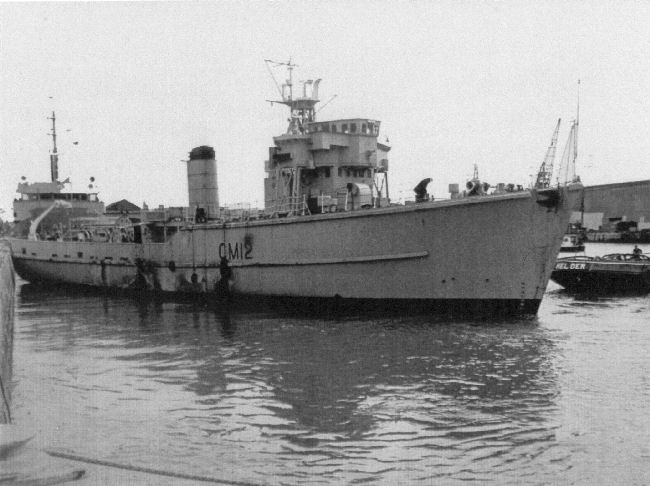
HMS Blaxton
HMS Blaxton was launched by Thornycroft on the 21st June 1955 transferred to the Irish Naval Service on 22 February 1971, and renamed Fóla. The mine hunter remained in service until 1987, when she was sold for breaking.
HMS Blyth
- Type. Minesweeper
- Class. Bangor
- Pennant. J15
- Builder. Blyth Shipbuilding
- Speed. 16 Knots
- Ordered. 06/07/1939
- Laid Down. 11/01/1940
- Launched. 02/09/1940
- Commissioned. 17/06/1941
- Fate. Scrapped 1952
-
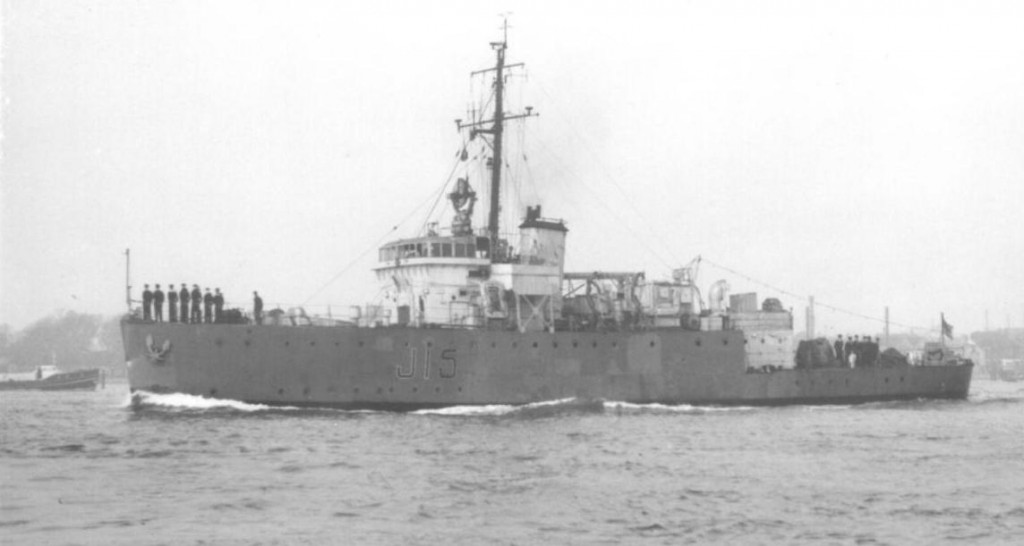
HMS Blyth
HMS Blyth was ordered on 6th July 1939 from Blyth Shipbuilders. Laid down on 11th January 1940 and was launched on 2nd September 1940 and after delay in completion was accepted for service on 17th June 1941.
02/10/1941. Sailed from Harwich with Eastbourne and Bridlington for minesweeping duties.
December 1941. Transferred to Harwich for special mine clearance off East Coasts in English Channel.
July 1942. Transferred with Flotilla to Harwich for further service in North Sea for East Coast minesweeping.
HMS Blyth was reduced to Reserve Status and placed on the Disposal List. She was intended to be converted for mercantile use and renamed Radbourne but this was not completed and the ship was sold for demolition in November 1952.
HMS Bootle
- Type. Minesweeper
- Class. Bangor
- Pennant. J143
- Builder. Ailsa Shipbuilding
- Speed. 16 knots
- Ordered. 20/12/1939
- Laid Down. 31/08/1940
- Launched. 23/10/1942
- Commissioned. 23/04/1942
- Fate. Scrapped 1948
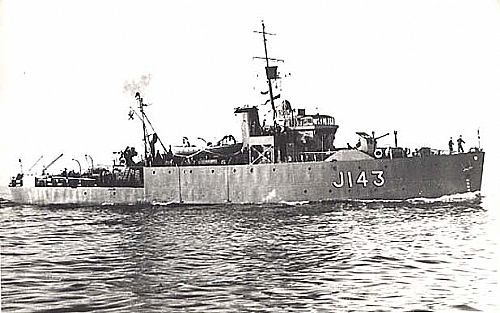
HMS Bootle
HMS Bootle was launched on the 23 October 1941 by Ailsa Shipbuilding. Sold for Scrapping – 1st January 1948.
HMS Bramble
-
Type. Minesweeper
-
Class. Halcyon
-
Pennant. J11
-
Builder. Devonport
- Speed. 16.5 Knots
-
Ordered. 11/08/1937
-
Laid Down. 22/11/1937
-
Launched. 12/07/1938
-
Commissioned. 1939
-
Fate. Sank 31/12/1942
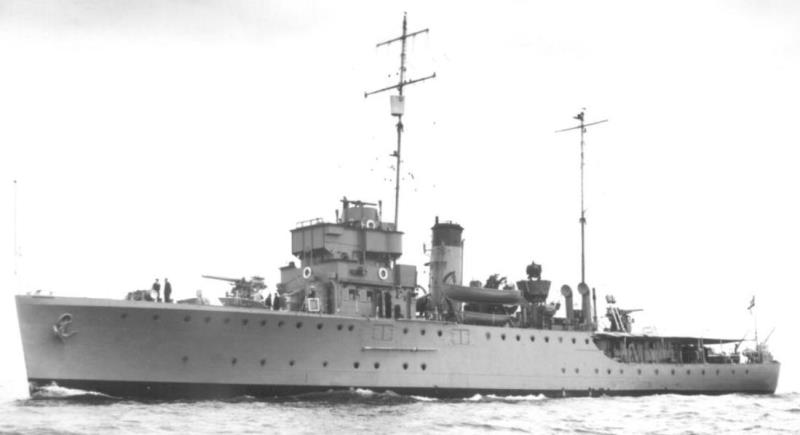
HMS Bramble
HMS Bramble was a Halcyon-class, which was commissioned in 1939, just prior to World War II. The ship was ordered on 11 August 1937 from HM Dockyard Devonport, with engines supplied by Barclay Curle. She was laid down on 22 November 1937, and launched on 12 July 1938. After sea trials in July 1939 Bramble was assigned to the 1st Minesweeping Flotilla at Portland Harbour, sailing with the Flotilla to Scapa Flow in August. She served as a minesweeper in the North Sea until February 1941, when she transferred to Harwich for operations in the Thames Estuary. She returned to the UK in January 1942 to be refitted at a yard in Sunderland. She returned to convoy duty in April, returning to Russia with Convoy PQ 15. She served there until October, when she returned to the UK to be repaired at a shipyard in the Humber. On 22 December 1942 Bramble sailed with Convoy JW 51B from Loch Ewe. The convoy was sighted by the German submarine U-354 on the 30th, and the German cruisers Admiral Hipper and Lützow, accompanied by six destroyers, sailed from Altenfjord to intercept them in Operation Regenbogen, leading to the Battle of the Barents Sea. On 31 December Bramble, which had been detached to search for stragglers, was returning to the convoy when she encountered Admiral Hipper and three destroyers. Hipper promptly opened fire with her 8-inch (200 mm) guns. Bramble returned fire, but was overwhelmed and finally sunk with all hands by the destroyer Z16.
HMS Brave
- Type. Minesweeper
- Class. Algerine
- Pennant. J305
- Builder. Blyth Shipbuilding
- Speed. 16.5 Knots
- Ordered. 20/05/1941
- Laid Down. 23/04/1942
- Launched. 04/02/1943
- Commissioned. 03/08/1943
- Fate. Scrapped 25/11/1958
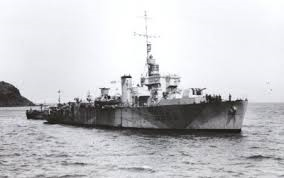
HMS Brave
HMS Brave was an Algerine Class Minesweeper launched on the 4th February 1943. History: joined the 19th Minesweeping Flotilla and served in the Med’ 1943 until May 1946.
HMS Bridport
- Type. Minesweeper
- Class. Bangor
- Pennant. J50
- Builder. William Denny
- Speed. 16 Knots
- Ordered. 06/07/1939
- Laid Down. 11/09/1939
- Launched. 29/02/1940
- Commissioned. 28/11/1940
- Fate. Scrapped 1959
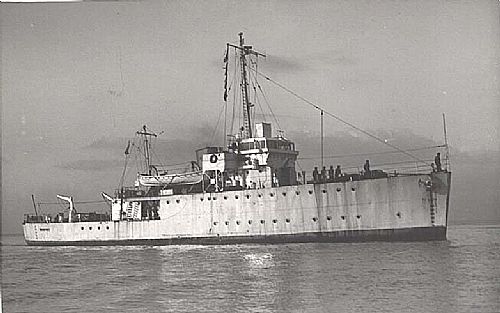
HMS Bridport
HMS Bridport was a Bangor-class minesweeper launched in December 1940 in Dumbarton, Scotland. The vessel was transferred to the Royal Air Force in 1946 and renamed HMRAFV Bridport and was eventually broken up at Plymouth in 1959.
HMS Brinton
- Type. Minesweeper
- Class. Ton
- Pennant. M1114
- Builder. Welton
- Speed. 15 Knots
- Ordered. 1951
- Laid Down. 1952
- Launched. 08/08/1952
- Commissioned.
- Fate. Scrapped 1997
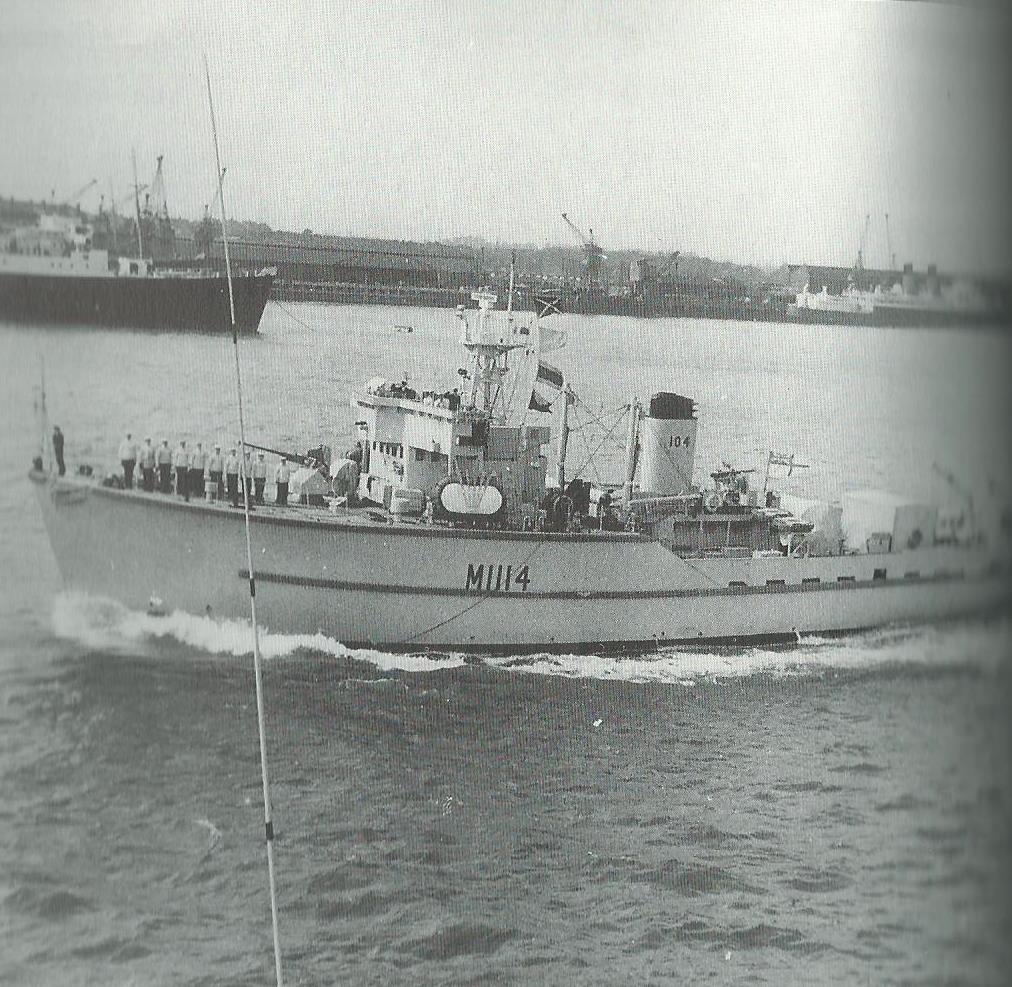
HMS Brinton
HMS Brinton was a Ton Class Minesweeper launched on the 8th August 1952 by Welton.
HMS Britomart
- Type. Minesweeper
- Class. Halcyon
- Pennant. J22
- Builder. Devonport
- Speed. 16.5 knots
- Ordered. 11/08/1937
- Laid Down. 01/01/1938
- Launched. 23/08/1938
- Commissioned. 24/08/1940
- Fate. Sank 27/08/1944
-
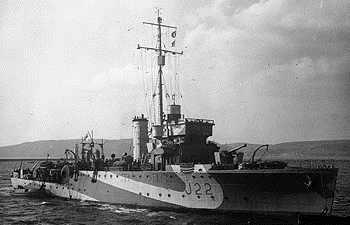
HMS Britomart
HMS Britomart was a Halcyon-class minesweeper, was ordered on 11 August 1937 and was laid down at Devonport Dockyard on 1 January 1938. She was launched on 23 August 1938, and commissioned on 24 August 1939.January 1940 saw the flotilla transferred for Atlantic convoy defence duties, based out of Stornoway and covering the passage of convoys to Canada. Britomart and Bramble sailed for a refit in Leith in March which lasted until May. They re-joined the fleet at Scapa Flow in June and commenced their sweeping duties. This kept them occupied until February 1941, when Britomart, Bramble, Hebe and Sharpshooter were transferred to Harwich to sweep convoy routes as part of the Nore Command. Britomart came under air attack on 15 March whilst sweeping off Rye, East Sussex and was hit by a bomb. It struck near the wardroom, killing everyone inside and causing considerable damage. She made for Portsmouth under her own steam and escorted by Sharpshooter. Her repairs lasted from April to May, and on her return to service in June she joined the 3rd Escort Group with HMS Hazard and Bramble. August saw them based at Stornoway and deployed as local escorts for the Atlantic convoys, as well as their usual sweeping duties.
HMS Bude
- Type. Minesweeper
- Class. Bangor
- Pennant. J116
- Builder. Lobnitz & Co
- Speed. 16 Knots
- Ordered. 09/09/1939
- Laid Down. 02/04/1940
- Launched. 04/09/1940
- Commissioned. 12/02/1941
- Fate. Scrapped 1973
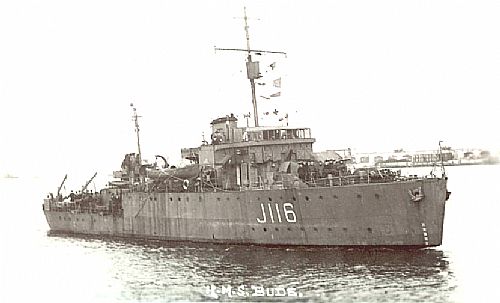
HMS Bude
HMS Bude was ordered from Lobnitz on 9th September 1939 and laid down on 2nd April 1940. The ship was launched on 4th September 1940.
December 1941. 13th Minesweeping Flotilla based at Harwich.
HMS Bude was placed on the Disposal List and sold to Egypt in 1946. The ship was renamed Nasr and was later re-designated as a Corvette. She remained on the Active List of the Egyptian Navy until after 1973.
HMS Cadmus
- Type. Minesweeper
- Class. Algerine
- Pennant. J230
- Builder. Harland & Wolff
- Speed. 16.5 Knots
- Ordered. 15/11/1940
- Laid Down. 21/07/1941
- Launched. 27/05/1942
- Fate. Scrapped 1960
-
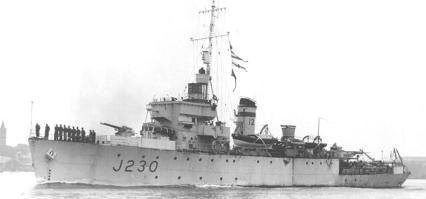
HMS Cadmus
HMS Cadmus was an Algerine minesweeper launched by Harland and Wolff, Belfast. Laid down on 21st July launched on 27th May 1942 her build was completed on 9th September 1942. She was Sold to the Belgian Navy and renamed Georges Lecointe in January 1950 and eventually Scrapped in 1960.
HMS Chameleon
- Type. Minesweeper
- Class. Algerine
- Pennant. J387
- Builder. Harland & Wolff
- Speed. 16.5 Knots
- Ordered. 30/04/1942
- Laid Down. 20/08/1943
- Launched. 06/05/1944
- Commissioned. 14/09/1944
- Fate. Scrapped 03/04/1966
-
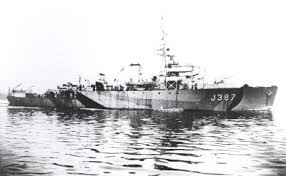
HMS Chameleon
HMS Chameleon was ordered on 30th April 1942 from Harland and Wolff, Belfast. Laid down on 20th August 1943 and launched on 6th May 1944. Chameleon re-joined the 7th Flotilla at Singapore and remained in the Far East until February 1946 when she returned to UK with the six remaining ships of the Flotilla to Pay-off. The ship later recommissioned for service in the 2nd Minesweeping Flotilla, Mediterranean Fleet. Between 1947 and 1954 she was deployed for Palestine patrol with other Fleet units and took part in the standard Exercise and Visits Programmes each year after 1948. Laid-up at Portsmouth she was not recommissioned before being placed on the Disposal List in 1965. Sold in 1966 to Bisco for demolition by Ardmore Steel at Silloth, Cumberland she arrived at the breaker’s yard on 3rd April 1966.
HMS Chelsham
- Type. Minesweeper
- Class. Hunt
- Pennant. M2616
- Builder. Jones & Co
- Speed. 14 knots
- Ordered. 1951
- Laid Down. 1952
- Launched. 09/07/1952
- Commissioned. 1952
- Fate. Scrapped 1977
-
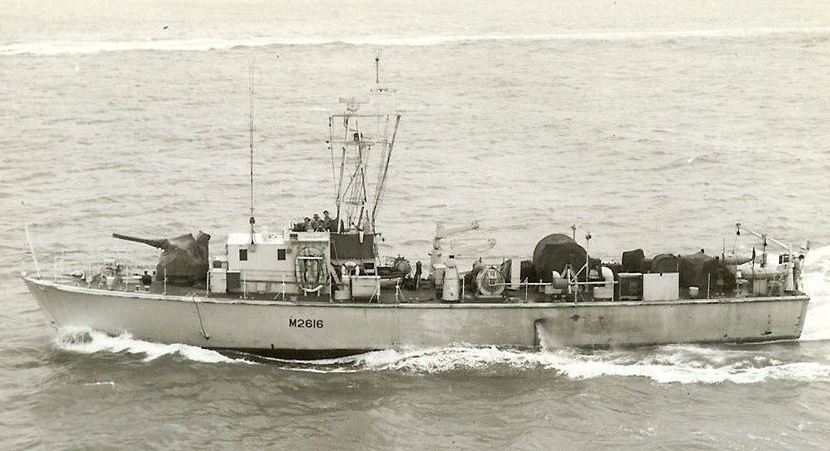
HMS Chelsham
HMS Chelsham was a Ham Class Minesweeper launched on the 9th July 1952 by Jones & Co.
HMS Clacton
- Type. Minesweeper
- Class. Bangor
- Pennant. J151
- Builder. Ailsa Shipbuilding
- Speed. 16 knots
- Ordered. 20/12/1939
- Laid Down. 12/11/1940
- Launched. 18/12/1941
- Commissioned. 04/06/1942
- Fate. Sank 31/12/1943
-
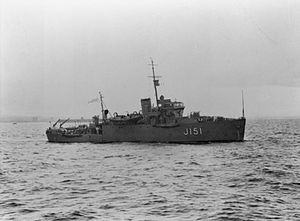
HMS Clacton
HMS Clacton was a Bangor class minesweeper. She was built by Ailsa Shipbuilding Co. Ltd. at Troon, Scotland and launched on 18 December 1941. HMS Clacton was in the Mediterranean off the east coast of Corsica, on passage from La Maddalena to Bastia on 31 December 1943. She struck a mine at 0832 hours and sank immediately.
HMS Cobham
- Type. Minesweeper
- Class. Ham
- Pennant. M2618
- Builder. Fairlie Yacht Co
- Speed. 14 knots
- Ordered. 1952
- Laid Down. 1953
- Launched. 14/05/1953
- Commissioned. 1953
- Fate. Scrapped 1966
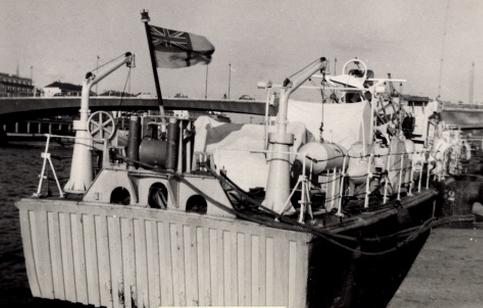
HMS Cobham
HMS Cobham was a Ham Class Minesweeper launched on the 14th May 1953 by Fairlie Yacht Co.
HMS Coniston
- Type. Minesweeper
- Class. Ton
- Pennant. M1101
- Builder. Thornycroft
- Speed. 15 Knots
- Ordered. 1951
- Laid Down. 1952
- Launched. 09/07/1952
- Commissioned. 1952
- Fate. Scrapped 1970
-
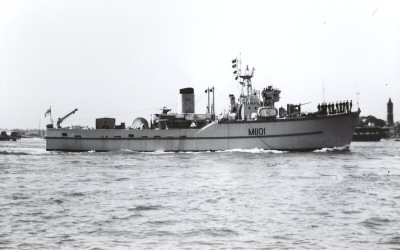
HMS Coniston
HMS Coniston was one of the Ton-class coastal minesweepers launched by Thornycroft on the 9th July 1952 and scrapped in 1970.
HMS Darlaston
- Type. Minesweeper
- Class. Ton
- Pennant. M1127
- Builder. Cook, Welton & Gemmell
- Speed. 15 Knots
- Ordered. 1951
- Laid Down. 1952
- Launched. 25/09/1952
- Commissioned. 1952
- Fate. Scrapped 24/05/1960
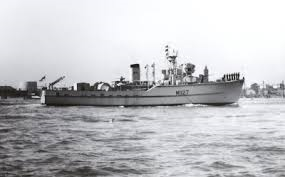
HMS Darlaston
HMS Darlaston was Ton class Minesweeper built by Cook, Welton and launched on the 25th September 1952.
HMS Dingley
- Type. Minesweeper
- Class. Ley
- Pennant. M2001
- Builder. White & Co
- Speed. 13 Knots
- Ordered. 1951
- Laid Down. 1952
- Launched. 03/09/1952
- Commissioned. 1952
- Fate. Scrapped 16/07/1967
-
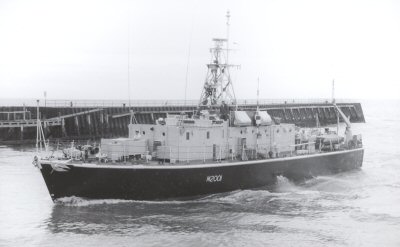
HMS Dingley
HMS Dingley was a Ley class Minesweeper launched on the 3rd September 1952 by White & Co. The Ley class was a class of inshore mine hunter built for the Royal Navy in the mid-1950s.Their work was to locate individual mines and neutralise them. This was a then new role, and the class was configured for working in the shallow water of rivers, estuaries and shipping channels. They were of composite construction, that is, wood and non-ferrous metals, to give a low magnetic signature, important in a vessel that may be dealing with magnetically detonated mines. They displaced 164 tons fully laden, were armed with a Bofors 40 mm gun and were powered by a pair of Paxman diesel engines.
PS Duchess of Fife
- Type. Paddle Minesweeper
- Class. None
- Pennant. PP533
- Builder. Fairfield Shipbuilding
- Ordered. 1902
- Laid Down. 1903
- Launched. 09/05/1903
- Commissioned. 1939
- Fate. Scrapped 15/09/1953
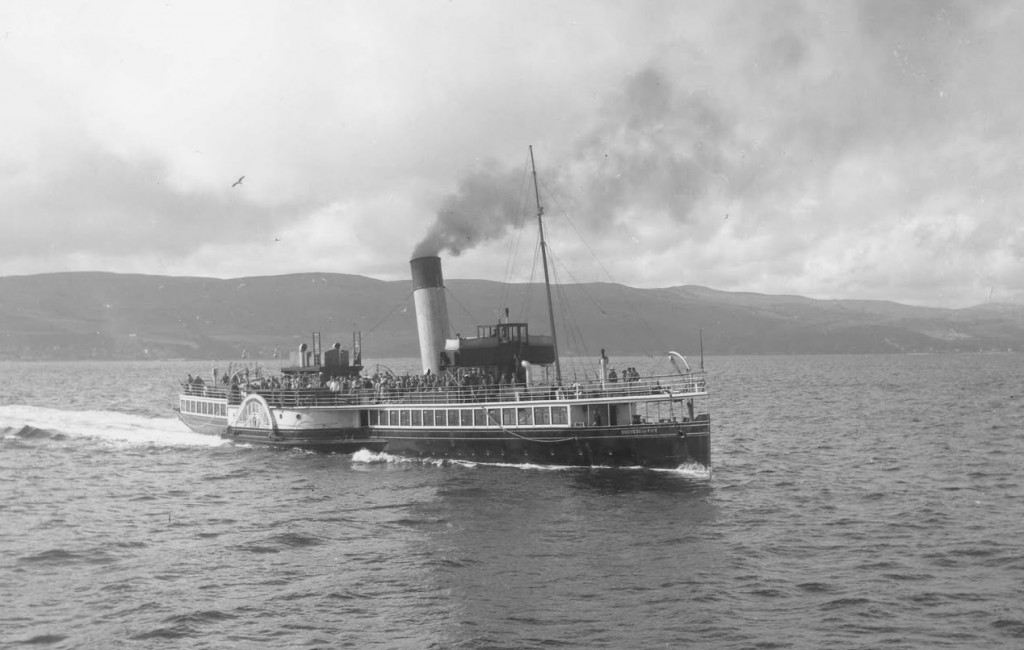
Ps Duchess of Fife
PS Duchess of Fife was built in 1903 and saw service in both World War I and World War II. Requisitioned for the second time in 1939, and again served as a minesweeper.
The Duchess of Fife took part in the evacuation from Dunkirk, and was later converted for anti-aircraft training in the Firth of Forth.
PS Duchess of Rothesay
- Type. Paddle Minesweeper
- Class. None
- Pennant. None
- Builder. J&G Thomson
- Ordered. 1894
- Laid Down. 1895
- Launched. 20/04/1895
- Commissioned. 1939
- Fate. Scrapped 1946
-
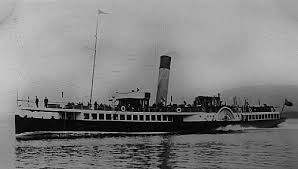
Duchess of Rothesay
Built by J & G Thomson Clydebank and Launched on Saturday 20th April 1895, She was requisitioned as a minesweeper in 1915 and during her career under the white ensign towed a disabled Zeppelin airship into Margate. She was later renamed Duke of Rothesay, and returned to the Clyde in 1919, reverting to her original name. In 1939, she was again requisitioned by the Admiralty, and became a minesweeper, initially on the Clyde, then later at Dover. From 1942 she was used as an accommodation ship. In August 1946, she was sold to Dutch breakers, and scrapped.
HMS Dundalk
- Type. Minesweeper
- Class. Hunt
- Pennant. J60
- Builder. Clyde Shipbuilding
- Speed. 16 knots
- Ordered. 1918
- Laid Down. 1918
- Launched. 30/01/1919
- Commissioned. 02/05/1919
- Fate. Sank 17/10/1940
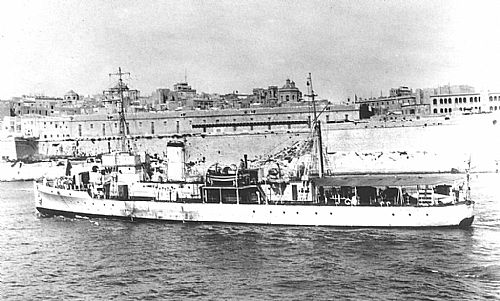
HMS Dundalk
HMS Dundalk was a Hunt class minesweeper launched by Clyde Shipbuilding on the 30th January 1919 and commissioned for the 3rd Minesweeping Flotilla in Malta. On arrival she was placed in Reserve and recommissioned in 1939, returning to England to work on the East Coast.
On 31 May 1940 Dundalk took part in the Dunkirk evacuation to Margate with 500 British troops. She sailed back to Dunkirk and on 1 June was attacked by 12 Messerschmitt aircraft. Dundalk then sailed back to Margate giving assistance to the Havant en route. She arrived at Margate at 12.15 on 1 June and disembarked 280 troops. She returned to Dunkirk, embarked about 450 French troops and arrived back at Folkestone on 3 June. Mined on 16 October 1940 and foundered under tow 17 October 1940 off Harwich at South Cutler Buoy.
HMS Dunoon
- Type. Minesweeper
- Class. Hunt
- Pennant. J52
- Builder. Clyde Shipbuilding
- Speed. 16 knots
- Ordered. 1918
- Laid Down. 1918
- Launched. 21/03/1919
- Commissioned. 19/06/1919
- Fate. Sank 30/04/1940
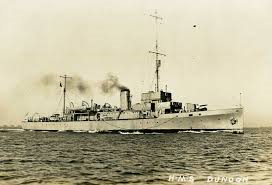
HMS Dunoon
HMS Dunoon was a Hunt class minesweeper, Launched by Clyde Shipbuilding on the 21st March 1919. In December 1939 she was sweeping for mines around Malta. The following month she was recalled to England, stopping at Gibraltar for fuel. She then worked in the North Sea as part of the 4th Minesweeping Flotilla, based at Great Yarmouth. In April 1940 she struck a mine at Smith’s Knoll near Great Yarmouth and sank with the loss of 3 officers and 23 ratings.
History: 12th August 1921 – Arrived Harwich.
HMS Eastbourne
- Type. Minesweeper
- Class. Bangor
- Pennant. J127
- Builder. Lobnitz
- Ordered. 09/09/1939
- Laid Down. 29/06/1940
- Launched. 05/11/1940
- Commissioned. 26/05/1941
- Fate. Scrapped 1948
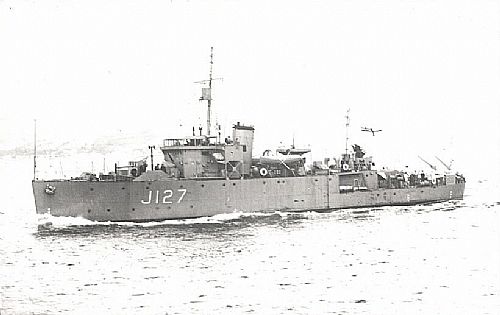
HMS Eastbourne
History:
1941 August. Joined Flotilla at Harwich for East Coast minesweeping.
November. Channel deployment in continuation. On release took passage alone to re-join Flotilla at Harwich.
1942 July. Returned to Harwich with Flotilla for minesweeping off east coast.
HMS Eastbourne was paid off after VJ Day and remained in Reserve until placed on the Disposal List in 1947. The ship was then sold for breaking-up by Clayton and Davies at Dunston where she arrived Under tow in October 1948.
HMS Edderton
- Type. Minesweeper
- Class. Ton
- Pennant. M1111
- Builder. Doig
- Speed. 15 Knots
- Ordered. 1952
- Laid Down. 1952
- Launched. 01/11/1952
- Commissioned. 1953
- Fate. Sold 1964
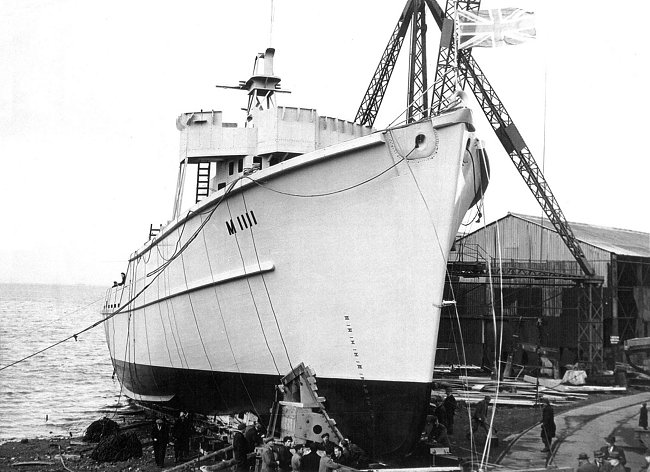
HMS Edderton
HMS Edderton was a Ton class Minesweeper launched on the 1st November 1952 by Doig. Edderton was completed on 10th March 1954, and became Squadron Leader of 104th MSS. The ship was converted to a Coastal Survey Vessel in 1964 and re-named Myrmidon. She was sold to Malaya in 1968 and re-named Perantau.
HMS Emperor of India
- Type. Paddle Minesweeper
- Class. None
- Pennant. None
- Builder. Thornycroft
- Ordered. 1904
- Laid Down. 1905
- Launched. 1906
- Commissioned.
- Fate. Scrapped 24/01/1957
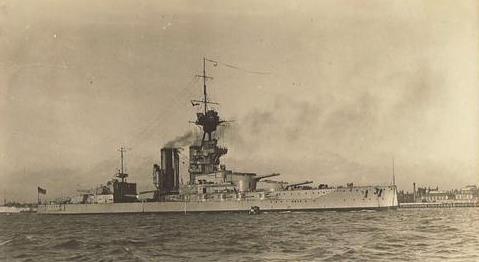
Emperor of India
HMS Emperor of India was a Paddle Minesweeper built for the Southampton, Isle of Wight & South of England Royal Mail Steam Packet Co, Spent World War II based on the Thames as a minesweeper then anti-aircraft vessel. Returned to service in 1948 after a refit, including oil-fired boiler, larger funnel and wheelhouse despite siting even lower in the water and attaining ever poorer speed, she remained in service until after the 1956 season. Left Weymouth under tow on January 24th, 1957 for scrapping at Bruges in Belgium.
HMS Felixstowe
- Type. Minesweeper
- Class. Bangor
- Pennant. J126
- Builder. Lobnitz
- Laid Down. 08/08/1940
- Launched. 22/07/1941
- Commissioned. 11/07/1941
- Fate. Sank 18/12/1943
-
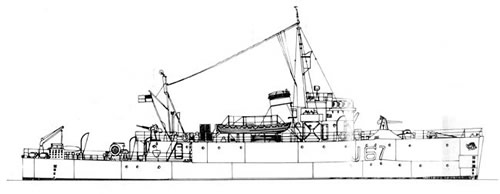
Bangor Class Minesweeper
HMS Felixstowe was a turbine-engined Bangor class minesweeper of the Royal Navy, She was built by Lobnitz and Company, Renfrew, Scotland and launched on 22 July 1941. She served in the Mediterranean during the Second World War. She struck a mine on 18 December 1943 and sank east of Capo Ferro, Sardinia, Italy.
HMS Ford
- Type. Minesweeper
- Class. Hunt
- Pennant.
- Builder. Dunlop Bremmer
- Speed. 14 Knots
- Ordered. 1917
- Laid Down. 1918
- Launched. 19/10/1918
- Commissioned.
- Fate. 1954
-
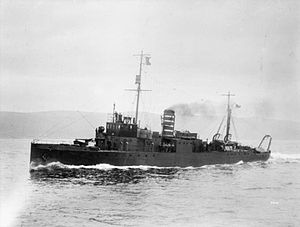
Hunt Class Minesweeper
HMS Ford was a Hunt class minesweeper of the Royal Navy launched on the 19th October 1918 by Dunlop Bremmer. In 1928 she was sold to Townsend Bros and converted into a car ferry between Dover and Calais, fitted with a stern door which folded down onto the quay. However, this was unusable, and the cars were craned on. She could carry 165 passengers and 26 cars. Two general saloons, a ladies’ saloon and three private state rooms were constructed. During the Second World War Fordeserved under the Admiralty as a salvage vessel. Afterwards she was refitted at Southampton and returned to Dover as a car ferry on 12 April 1947. She was withdrawn in October 1949, sold to Bland Line, renamed “Gibel Tarik” and finished her days as a car ferry between Gibraltar and Tangier, Morocco, finally being withdrawn in 1954.
HMS Frolic
- Type. Minesweeper
- Class. AUK
- Pennant. J406
- Builder. Associated Shipbuilders
- Speed. 17 Knots
- Ordered. 24/03/1942
- Laid Down. 03/05/1943
- Launched. 22/07/1943
- Commissioned. 18/05/1944
- Fate. 1947
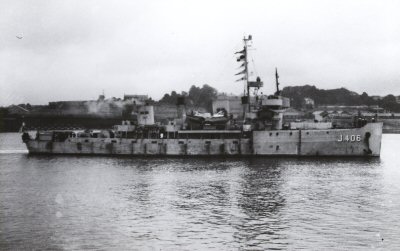
HMS Frolic
HMS Frolic was an AUK Class Minesweeper launched on the 22nd July 1943 by Associated Shipbuilders (Seattle, Washington, U.S.A.) Fate: Returned to the United States 1947.
HMS Gleaner
- Type. Minesweeper
- Class. Halcyon
- Pennant. J83
- Builder. William Gray
- Speed. 16.5 Knots
- Ordered. 13/03/1936
- Launched. 10/06/1937
- Commissioned. 30/08/1938
- Fate. Scrapped 02/09/1946
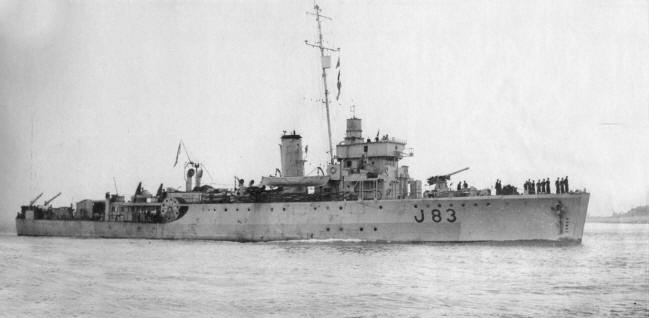
HMS Gleaner
HMS Gleaner was a Halcyon minesweeper built by William Gray & Co, Hartlepool and launched on the 10th June 1937. The remainder of HMS Gleaner’s escort service was comparatively uneventful and in February 1942 she was taken in hand at Leith for conversion to a Fleet Minesweeper and to be fitted for Arctic conditions. On completion in May she joined the 1st Minesweeping Flotilla, Home Fleet. On 25 August 1944 at 1540, Gleaner suffered extensive damage from a near miss mine whilst sweeping to westward of Cap d’Antifer in follow up operations. Her main engine was put out of action and she was taken in tow for repairs in the UK. Once repaired she was involved in sweeps in the area of Margate Roads. On 14 March 1945 she was rendered unseaworthy following a collision with a pilot ship which left her with a six foot hole at deck level. HMS Gleaner remained with the 1st MSF until 2 September 1946 when she paid off into reserve at Falmouth. On 12 May 1950 she was transferred to the British Iron and Steel Corporation for breaking up.
HMS Goatfell
- Type. Paddle Minesweeper
- Class. None
- Pennant.
- Builder. William Denny
- Speed. 14 Knots
- Ordered. 1933
- Laid Down. 1933
- Launched. 01/02/1934
- Commissioned. 1939
- Fate. Scrapped 1980

HMS Goatfell
PS Goatfell was a paddle steamer built in 1934 as PS Caledonia built by William Denny and Brothers of Dumbarton for the Caledonian Steam Packet Company. She was launched on Thursday 1 February 1934 and completed later that year.
In 1939 she was converted to a minesweeper and renamed HMS Goatfell. Her wartime service continued after 1941 as an anti-aircraft ship.
In 1946 Caledonia was returned to her owners, but in 1954 the car ferry revolution displaced her to Ayr as excursion steamer, with relief sailings from Ardrossan to Arran.
In 1969 she was retired from service and sold for scrap. Saved by subsequent sale to Bass-Charrington, she served as a floating pub and restaurant named Old Caledonia on the Victoria Embankment of the River Thames. Badly damaged by fire in 1980, she was beyond economic repair and was scrapped in July 1980 at Milton Creek on The Swale near Sittingbourne, Kent.
HMS Golden Fleece
- Type. Minesweeper
- Class. Algerine
- Pennant. J376
- Builder. Redfern Construction
- Ordered. 25/11/1942
- Laid Down. 30/08/1943
- Launched. 29/02/1944
- Commissioned. 29/09/1944
- Fate. Scrapped 08/08/1960
-
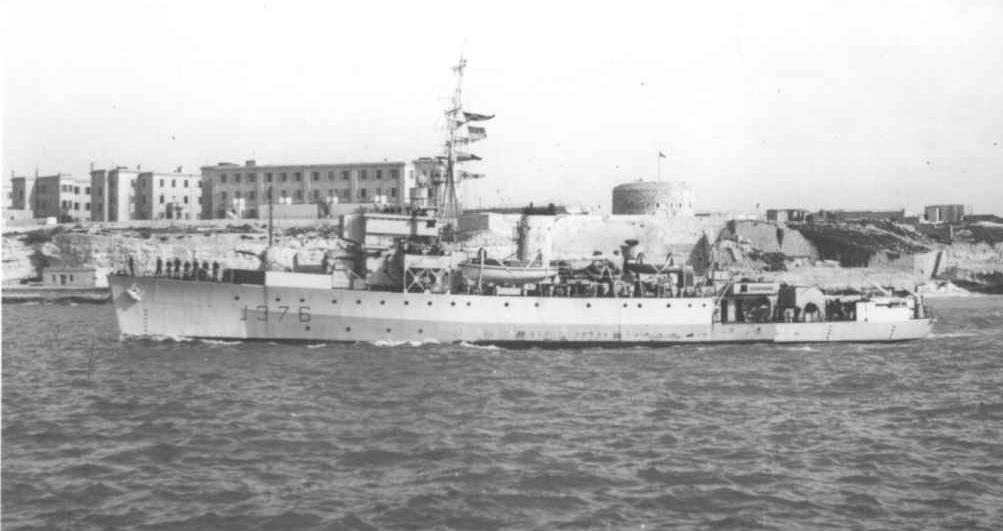
HMS Golden Fleece
HMS Golden Fleece was an Algerine Class Minesweeper built by Redfern Construction Ltd, Toronto, Canada and launched on the 29th February 1944. Served in the East Indies and Pacific at the end of the war. Returned through the Mediterranean to Devonport (Plymouth) arriving there on 10 September 1946. Scrapped at Llanelli, Wales starting on 8 August 1960.
HMS Gossamer
- Type. Minesweeper
- Class. Halcyon
- Pennant. J63
- Builder. William Hamilton
- Speed. 16.5 Knots
- Ordered. 16/07/1936
- Laid Down. 02/11/1936
- Launched. 05/10/1937
- Commissioned. 31/03/1938
- Fate. Sank 24/06/1942
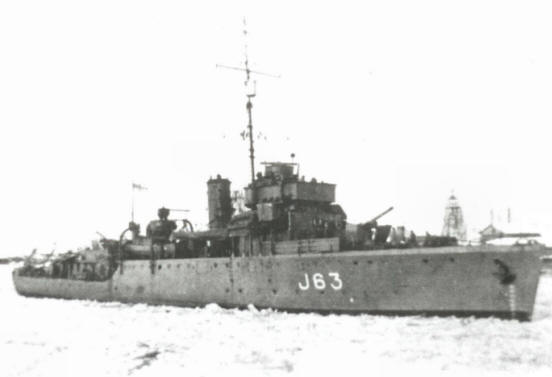
HMS Gossamer
HMS Gossamer was a minesweeper of the “Halcyon” class authorised in the 1936 naval program. She was built by William Hamilton and Co. Ltd, Port Glasgow, with machinery by Stephen and Sons, Ltd. and was laid down on 2nd November, 1936; launched 5th October 1937; and completed on 31st March 1938. When the War broke out In September 1939, she was serving in the North Atlantic Command at Gibraltar. She left there on 6th February 1942, arriving at Chatham on the 15th and after degaussing was allocated to the 5th Minesweeping Flotilla, Rosyth Command. At the evacuation from Dunkirk Gossamer made six trips to and from that port or the beaches, and brought home 3,200 officers and men. In 1941 the 6th Flotilla submarine sweeps from that port and in the escort of later convoys.
On 30th April 1942, Gossamer left Murmansk with two other ships of her flotilla to assist the cruiser Edinburgh which had been torpedoed with Convoy QP11. Next day Edinburgh was further attacked by German destroyers and sunk. Gossamer rescued 440 survivors. Gossamer remained in North Russia and on 24th June was sunk by a direct bomb hit during an air attack while at anchor in the Kola Inlet. Three officers were killed and 20 ratings missing, twelve were wounded.
HMS Halcyon
- Type. Minesweeper
- Class. Halcyon
- Pennant. J42
- Builder. John Brown
- Speed. 16.5 knots
- Ordered. 03/11/1932
- Laid Down. 27/03/1933
- Launched. 20/12/1933
- Commissioned. 18/03/1934
- Fate. Scrapped 19/04/1950
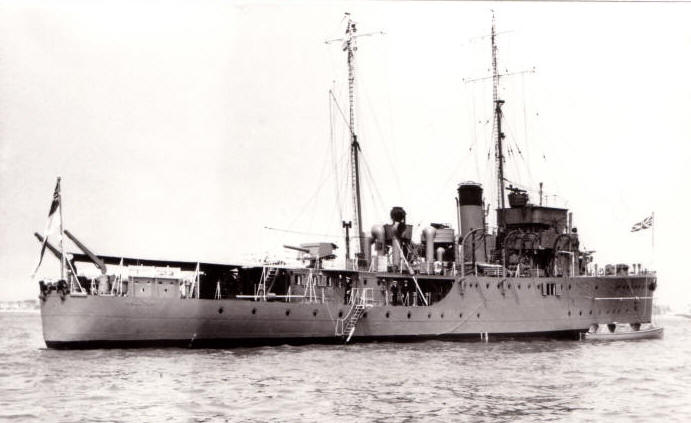
HMS Halcyon
HMS Halcyon was the first of the 21 Halcyon Class minesweepers constructed. She was laid down on 27th March 1933 at J. Brown, Clydebank and was commissioned 18th March 1934. She spent much of the next few years at Portland and Alexandria in the Med carrying out trials with later Halcyon Class ships. She started her war at Harwich, clearing mines in the Channel. At the evacuation of Dunkirk she transported 2,271 troops until she had to be withdrawn due to damage following air attack. It was at Dunkirk that two crew members were killed, Halcyon only casualties of the war.
Halcyon was sold for scrapping at Milford Haven on 19 April 1950 after 16-years’ service with the Royal Navy.
HMS Hare
- Type. Minesweeper
- Class. Algerine
- Pennant. J389
- Builder. Harland & Wolff
- Speed. 16.5 Knots
- Ordered. 30/04/1942
- Laid Down. 27/11/1943
- Launched. 20/06/1944
- Commissioned. 10/11/1944
- Fate: Scrapped 1959
-
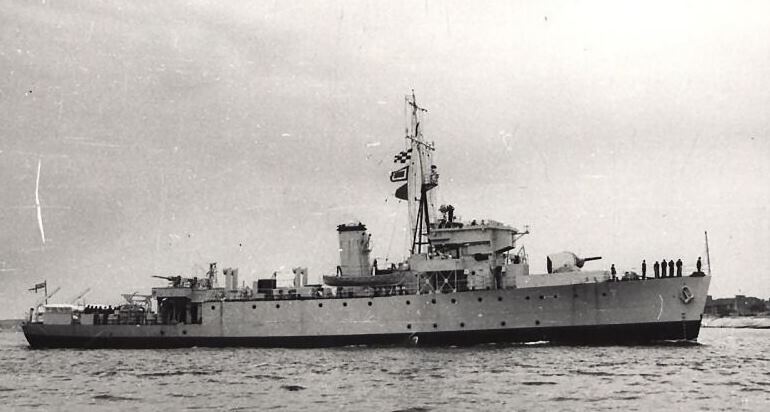
HMS Hare
HMS Hare was ordered on 30th April 1942 from Harland and Wolff, Belfast. Laid down on 27th November 1943 and was launched on 20th June 1944.
HMS Hare took passage with the Flotilla in October 1945 for duty based initially at Singapore with the 10th Flotilla. The ship was first deployed for mine clearance in areas near Singapore including ports in Indonesia. Later she was based at Hong Kong for this duty, she returned to UK in September 1946 and arrived at Harwich to Pay-off and reduce to Reserve status. Whilst laid-up at Harwich she was placed on the Sales List in 1959 and sold to Nigeria. Renamed Nigeria on 21st July that year she served as Flagship in the Royal Nigerian Navy until 1962 when she returned to UK. On arrival she was placed on the Disposal List and sold to Bisco for breaking-up by Metal Industries at Faslane where she arrived in tow for demolition on 6th November that year.
HMS Harrier
- Type. Minesweeper
- Class. Halcyon
- Pennant. J71
- Builder. Thornycroft
- Speed. 16.5 Knots
- Ordered. 23/02/1933
- Laid Down. 11/07/1933
- Launched. 17/04/1934
- Commissioned. 09/07/1934
- Fate. Scrapped 1950
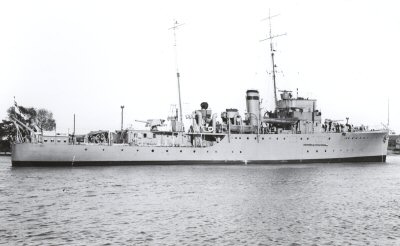
HMS Harrier
HMS Harrier. At the beginning of April 1940, Harrier was allocated to 6th Minesweeping Flotilla in the Dover Command, on 25 May, Harrier was sweeping ahead of a convoy off Zeebrugge when she was attacked by Junkers Ju88s. One 550lb bomb scored a direct hit on bridge structure passed through the forecastle and went out through the ship’s side, causing minor structural damage on the way. A second bomb missed but caused more serious damage, the mining effect fracturing machinery castings and reducing the speed to 10 knots. Harrier shot down one of the Ju88s with her 0.5in machine guns. She spent seven weeks under repair in Sheerness Dockyard before returning to Harwich to resume East Coast minesweeping duties.
At the beginning of November 1941, Harrier proceeded to the Humber for a short refit and to be prepared for cold weather operations with the Home Fleet. She returned to service in the middle of December and on 22nd left Scapa with the cruiser Arethusa and other ships for Operation ‘Anklet’, the raid on the Lofoten Islands, Norway, returning to Scapa on 1 January 1942.
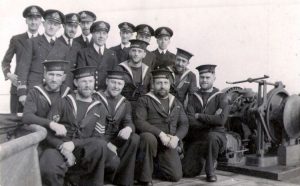
Harrier Crew (1941)
She continued her escort duties with North Russian convoys throughout 1942 and 1943 and at the beginning of January 1944, was once more at the Humber for repairs. She returned to service with 1st Minesweeping Flotilla during the first week in March, the Flotilla being, at that time, based on Loch Ewe. Later she was transferred for operations off the north‑east and east coasts of the United Kingdom. The Minesweeping Flotilla had been returned to the Nore Command, and continued operations from Harwich until the end of the War in Europe.
Later, it was transferred once more to Portsmouth. On 20th June 1946 to 25th July her armament was removed at Chatham and she was reduced to Category ‘C’. In August 1946, Harrier was reduced to Reserve at Harwich. She was scrapped in June 1950 at JJ king, Gateshead.
HMS Hazard
- Type. Minesweeper
- Class. Halcyon
- Pennant. J02
- Builder. William Gray & Co
- Speed. 16.5 Knots
- Ordered. 13/03/1936
- Laid Down. 27/05/1936
- Launched. 26/02/1947
- Commissioned. 24/11/1937
- Fate. Scrapped 22/04/1949

HMS Hazard
HMS Hazard was a Halcyon Class Minesweeper launched on the 26th February 1947. Hazard spent the first three months of 1943 escorting the convoys in Icelandic waters but in May sailed for the Mediterranean to take part in the invasion of Sicily in July. She then spent the next 14 months in the Med and was present at Taranto in Oct 1943 when the Italian fleet surrendered and sailed for Malta. Early in 1944 Hazard was lent to the 46th Escort Group and spent most of the year on escort duties. In October 1944 she arrived back at Harwich for a refit and re-joined the 1st Minesweeping Flotilla. She then spent most of 1945 clearing mines between the East Coast and the continent. In June 1946 Hazard was disarmed and placed in the Reserve. She remained in the Royal Navy until 22 April 1949 when she was handed over to the British Iron & Steel Corporation who arranged for her to be broken up at Grays in Essex.
HMS Hebe
- Type. Minesweeper
- Class. Halcyon
- Pennant. J24
- Builder. Devonport Dockyard
- Speed. 16.5 Knots
- Ordered. 02/03/1936
- Laid Down. 27/04/1936
- Launched. 28/10/1936
- Commissioned. 1936
- Fate. Sank 22/11/1943
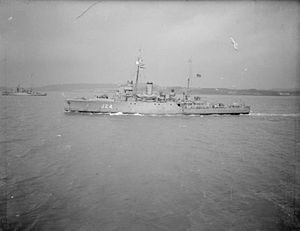
HMS Hebe
HMS Hebe was a Halcyon-class minesweeper built at the Devonport Dockyard and was commissioned in 1936. HMS Hebe served during the evacuation of Dunkirk, where she rescued 365 officers and men, and sent a gig to rescue Lord Gort on 29 May 1940. She later saw service in the Mediterranean Sea based at Malta as part of 14th/17th Minesweeper Flotilla. She participated in Operation Harpoon, Operation Torch, and the invasion of Pantelleria. She was sunk by a mine off Bari on 22 November 1943.
HMS Hussar
- Type. Minesweeper
- Class. Halcyon
- Pennant. J82
- Builder. Thornycroft, Southampton
- Speed. 16.5 knots
- Ordered. 23/02/1933
- Laid Down. 10/08/1933
- Launched. 27/08/1935
- Commissioned. 16/01/1935
- Fate. Sank 27/08/1944
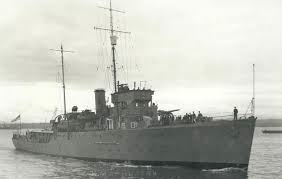
HMS Hussar
HMS Hussar was a Halcyon class Minesweeper launched on the 27th August 1935. On 4 Nov 1939 Hussar was involved in a collision with her sister ship Speedwell and sixteen days later she had a narrow escape when sweeping near the Humber Light Vessel. A mine was jammed in the sweep and exploded 10 yards from the ship’s side, causing some damage. In mid-May she was both bombed and mined; while off Brown Ridge, on the 15th she was hit by bombs. She was hit near the starboard edge of the quarterdeck and holed through the deck and side. Although only able to be steered by hand, she reached harbour safely but three of her complement had been killed and ten more wounded. The next day the Flag Officer – Harwich reported that she had also been damaged by a mine. Hussar was then reassigned to Western Approaches escort duty. Between 9 and 18 May she escorted Convoys OB319 and SC30 before putting in to Aberdeen for boiler repair between 2 and 15 June.
After the Allied Armies had been safely put ashore in Normandy, minesweeping was commenced off the Channel ports and on 27 August 1944, Hussar was with ships sweeping off Le Havre when an RAF strike was called down on a force of enemy ships in that area. In error, they attacked the RN sweepers, sinking Hussar.
HMS Ilfracombe
- Type. Minesweeper
- Class. Bangor
- Pennant. J95
- Builder. William Hamilton
- Speed. 16 knots
- Ordered. 28/08/1939
- Laid Down. 11/10/1939
- Launched. 29/01/1941
- Commissioned. 20/08/941
- Fate. Scrapped 01/01/1948
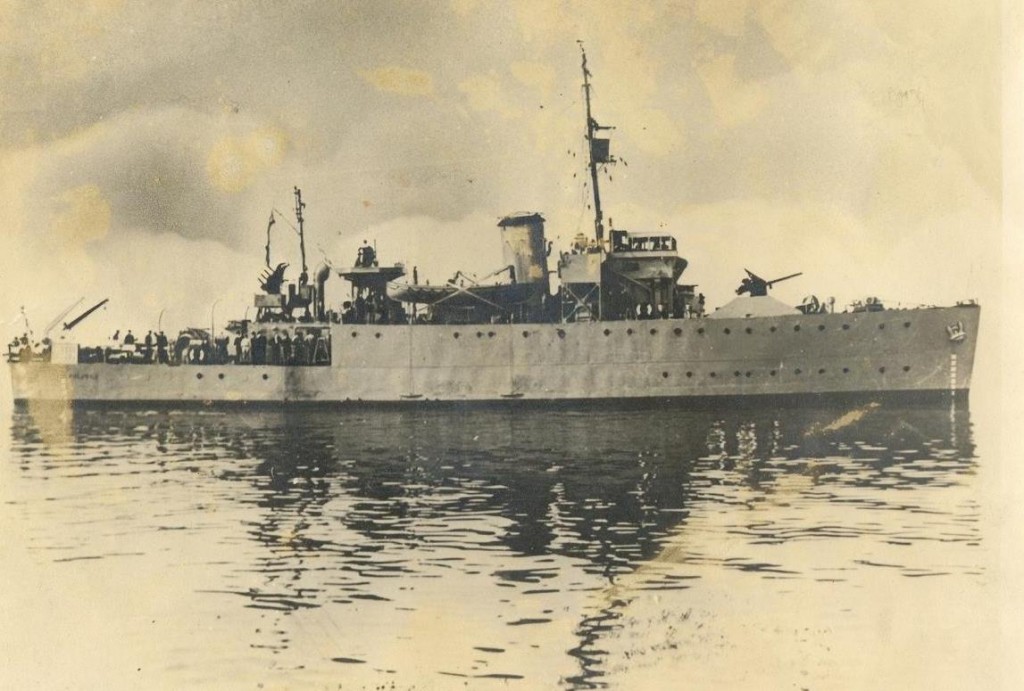
HMS ilfracombe
HMS Ilfracombe was ordered on 28th August 1939 from Hamilton Shipbuilders and laid down at Port Glasgow on 11th October 1939. She was launched on 29th January 1941 and build was completed on 20th August that year.
History: October 1941. Joined Minesweepers Clacton, Felixstowe, Stornoway, Eastbourne, Blyth and Polruan for service in North Sea.
November 1941. resumed Channel minesweeping at Harwich.
December 1941 Harwich deployment in continuation.
July 1942. Transferred with Flotilla to Harwich for further service in North Sea.
HMS Ilfracombe remained in commission after VJ Day and continued mine clearance duties in North Sea. She was transferred for similar duty in the Bristol Channel in 1946 and on completion was Paid-off. After de-storing the ship was laid up in the Reserve Fleet until placed on the Disposal List in 1947. She was towed to Dunston, County Durham for breaking-up by Messrs Clayton and Davie later that year.
HMS Irvine
- Type. Minesweeper
- Class. Aberdare
- Pennant. T44
- Builder. Fairfield
- Speed. 16 Knots
- Ordered. 1916
- Laid Down. 1917
- Launched. 08/12/1917
- Commissioned.
- Fate. Scrapped 21/02/1943
-
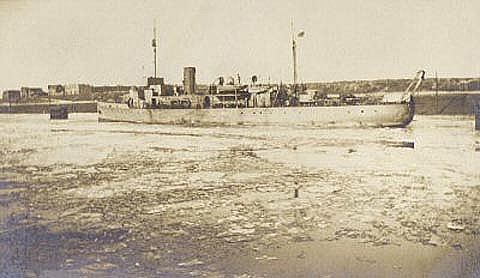
HMS Irvine
HMS Irvine was an Aberdare Class Minesweeper launched on the 8th December 1917 by Fairfield, Govan Yard 4. History 17th August 1921 – Sailed Portsmouth for Harwich.
HNLMS Jan Van Gelder
- Type. Minesweeper
- Class. Jan van Amstel
- Pennant. J60
- Builder. Gusto, Schiedam, Netherlands
- Laid Down. 10/03/1936
- Launched. 27/03/1937
- Commissioned. 13/09/1937
- Fate. Scrapped 1968
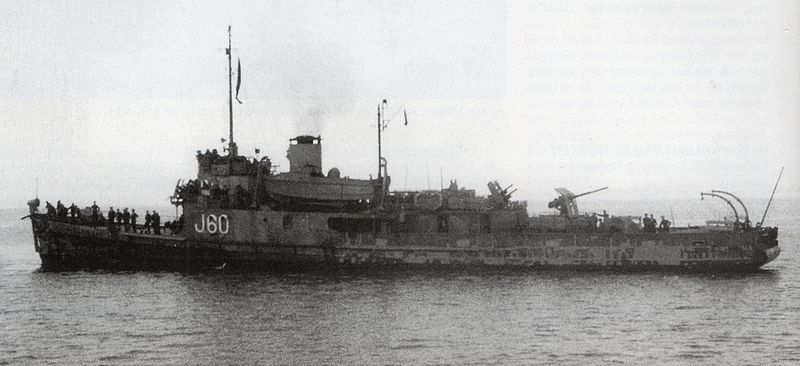
Jan Van Gelder
HNLMS Jan van Gelder was a Jan van Amstel-class minesweeper of the Royal Netherlands Navy that served in World War II. Jan van Gelder was damaged by her own mines off Terschelling on 8 October 1939. Three men were killed, three were missing and seven wounded. After initial repairs at Willemsoord, Den Helder, she received a new stern at Gusto, Schiedam, and was recommissioned on 17 April 1940.
Refitted and rearmed in 1940, she was assigned to serve with the British Royal Navy’s 11th Minesweeping Flotilla, stationed in Milford Haven, Wales. Later in 1941 she served with the 9th Flotilla off Portland. She mainly acted as buoy ship, marking the swept channels. From October 1941, she swept acoustic mines off Harwich and the Isle of Wight. Later she was sent to Scotland and served as an escort ship with a British submarine flotilla. On 26 March 1943 she was transferred to the Royal Navy.
She was returned to the Netherlands in 1946 and was recommissioned in the Royal Netherlands Navy. She sailed for the Dutch East Indies where she served as patrol ship until 1950. After her return, she was rebuilt as boom defence vessel. Struck in 1961, she was then transferred to the Zeekadetkorps Nederland (Dutch Sea Cadets). Scrapped 1968.
HMS Jason
- Type. Minesweeper
- Class. Halcyon
- Pennant. J99
- Builder. Ailsa Shipbuilding
- Speed. 17 knots
- Ordered. 04/09/1936
- Laid Down. 12/12/1936
- Launched. 6/10/1937
- Commissioned. 09/06/1938
- Fate. Scrapped 03/09/1946
-
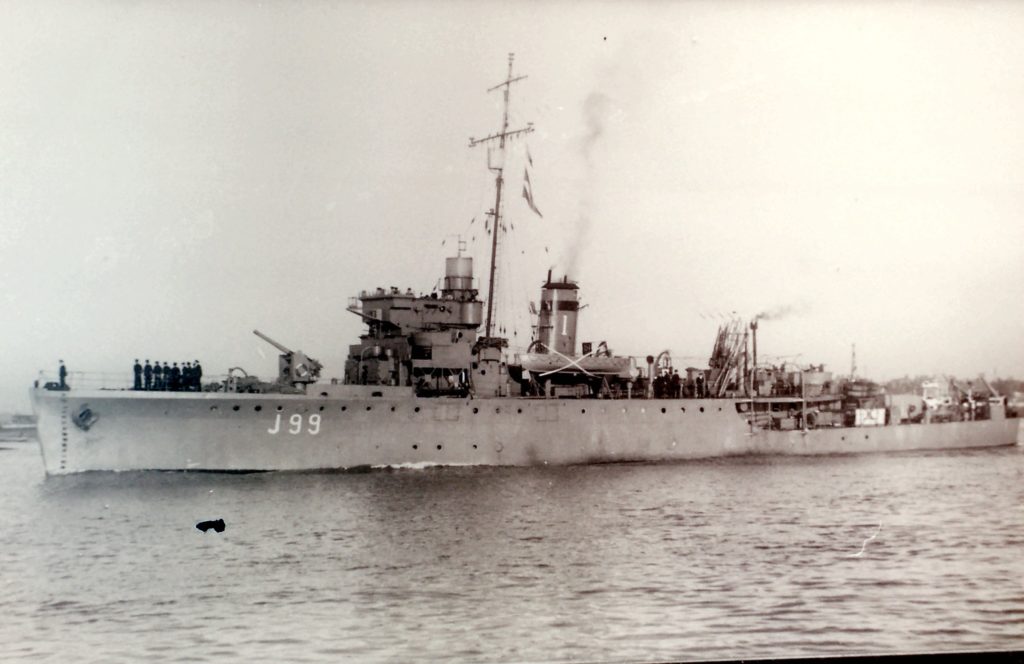
HMS Jason
HMS Jason was a Halcyon-class minesweeper. She was laid down on 12 December 1936, launched on 6 October 1937, and was completed on 9 June 1938. Although HMS Jason had been designed as a minesweeper, in September 1939, she was converted into an antisubmarine vessel and assigned to 1st Antisubmarine striking force at Belfast. Her first minor damage sustained was on 12 October when she was grounded at Row Point. Repairs were completed by 17 October and she was deployed in home waters for convoy defence, but she put in for more repairs on 3 August 1940, this time because of problems in her boilers.
After the repairs, she was again deployed to convoy defence, this time in the North West Approaches, during which she came under repeated attack from German U-boats U-32 and U-28. Although HMS Jason was not damaged in the attacks, four merchant ships were lost and Jason picked up 18 survivors. After one month in that role, yet more repairs were needed after a collision with the rescue tug Scheldt, in which significant structural damage to her stem was sustained. This time repairs were completed at HM Dockyard, Rosyth, and she was, upon release, deployed to the Rosyth Escort Force to defend shipping to and from Clyde.
In April 1945, she rejoined the 1st Minesweeping Flotilla at Harwich and continued minesweeping in the North Sea. It was one task that was not completed as soon as VE-Day dawned, and she continued in this capacity until a serious collision in the North Sea with HMS Hazard caused serious structural damage, forcing a return to Portsmouth for repairs. After repairs, she was again sent to continue clearing mines in the North Sea.
HMS Jewel
- Type. Minesweeper
- Class. Algerine
- Pennant. J390
- Builder. Harland & Wolff
- Speed. 16.5 Knots
- Ordered. 30/04/1942
- Laid Down. 27/11/1943
- Launched. 20/07/1944
- Commissioned. 09/12/1944
- Fate. Scrapped 07/04/1967
-
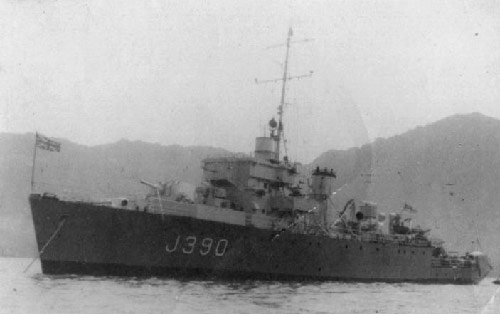
HMS Jewell
HMS Jewel was a Algerine class minesweeper launched 20th July 1944. history: 1945. Passage to Harwich with ships of Flotilla for minesweeping operations in Nore Command. Jewel re-joined the flotilla on completion and completed preparations for Foreign Service in the Far East. She took passage with the Flotilla in October 1945 for duty based initially at Singapore with the 10th Flotilla. First deployed for mine clearance in areas near Singapore including ports in Indonesia she was later based at Hong Kong for similar duties. The ship returned to UK and arrived at Portsmouth to Pay-off and reduce to Reserve status in September 1946. The following year she was nominated for use as the Drill Ship for the RNVR Division at Dundee and was towed there in January 1948. The ship was brought forward from Reserve during 1955 and refitted at Devonport before recommissioning on 28th December that year for service in the Dartmouth Training Squadron. She was deployed for training of Cadets from the Royal Naval College at Dartmouth until 1961 when she again paid-off and was placed in Reserve. In 1966 this ship was put on the Disposal List and sold to Bisco for breaking-up in December 1955. Towed to Inverkeithing she arrived at the beaker’s yard for demolition on 7 April 1967.
HMS Kellett
- Type. Minesweeper
- Class. Hunt
- Pennant. J05
- Builder. William Simons
- Speed. 14 Knots
- Ordered. 1918
- Laid Down. 1919
- Launched. 31/05/1919
- Commissioned. 1919
- Fate. Scrapped 20/03/1945
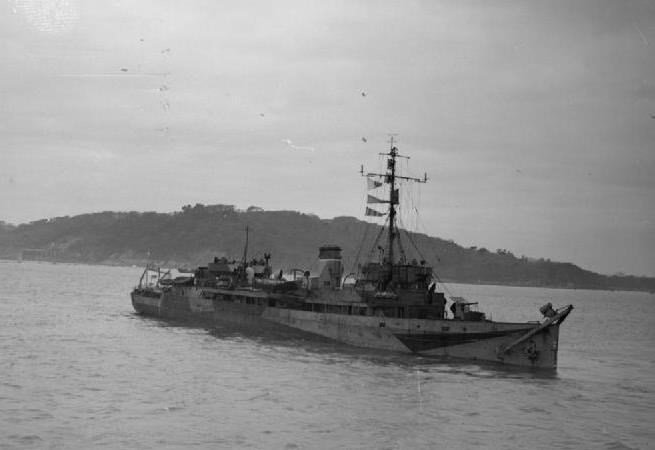
HMS Kellett
HMS Kellett was a Hunt class minesweeper built by William Simons and launched on the 31st May 1919,Kellett was part of the reserve fleet at the start of the Second World War.
HMS Leda
- Type. Minesweeper
- Class. Halcyon
- Pennant. J93
- Builder. Devonport Dockyard
- Speed. 16.5 Knots
- Ordered. 01/07/1936
- Laid Down. 16/11/1936
- Launched. 08/06/1937
- Commissioned. 19/05/1938
- Fate. Sank 20/09/1942
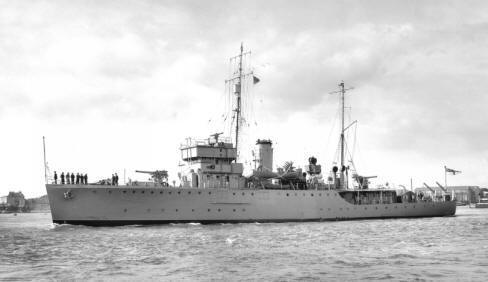
HMS Leda
HMS Leda was laid down at Devonport on 16th November 1936, launched on 8th June 1937 and commissioned on 19th May 1938. She was initially employed as a Fisheries Protection vessel. Leda then joined the 1st Minesweeping Flotilla and was based on the East Coast until March 1939. She then spent several weeks in May and June 1939 on patrol in and around Iceland. At the outbreak of War Leda was in Gibraltar, returning to UK on 22nd October 1939 where she joined the 5th MSF. She was employed on minesweeping duties on the East Coast until May 1940 when she was required for the evacuation of Dunkirk. She made eight crossings (including one from Dunkirk early on 3rd June with no troops) and evacuated 2,848 personnel. She was damaged in two collisions with other ships but not seriously Leda then returned to her East Coast duties before sailing up to Scotland for the end of the year. Here she remained until 29th September 1941 when she sailed with Britomart, Hussar and Gossamer as part of the escort for PQ1 to Archangel. She remained in North Russia carrying out escort, minesweeping and various other duties until 29th December 1941 when she returned with QP4. She stayed in Scotland to be fitted out (somewhat belatedly) for arctic service. With the work completed she again sailed for North Russia with PQ15 on 26th April 1942. She again remained there carrying out local duties, including going out to help bring in the surviving ships from PQ17. Leda left Russia on the 13th September 1942 as part of the ocean escort for the returning QP14. Leda was positioned on the starboard bow of the convoy. She reported that her sonar had broken down. The Senior Officer ordered her to swap her station on the starboard bow with the La Malouine stationed on the convoy’s port quarter.
At 0530 on the morning of the 20th, two torpedoes from U435 hit Leda, which was at the rear of the convoy. The tough little warship took an hour and a half to sink; 86 of his crew and two merchant navy officers were picked up and accommodated aboard Seagull, Rathlin and Zamalek. Forty three members of the crew died.
HMS Ledsham
- Type. Minesweeper
- Class. Ham
- Pennant. M2706
- Builder. J.Bolson
- Speed. 14 knots
- Launched. 30/06/1954
- Commissioned.
- Fate. Scrapped 1971
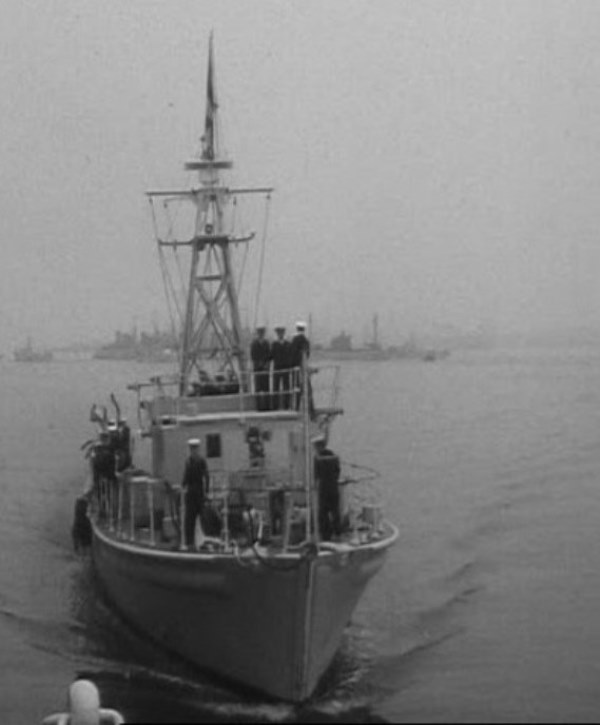
HMS Ledsham
HMS Ledsham was one of 93 ships of the Ham-class of inshore minesweepers launched on the 30th June 1954 by J.Bolson.
HMS Lorna Doone
- Type. Paddle Minesweeper
- Class. None
- Pennant.
- Builder. Napier, Shanks & Bell
- Ordered.
- Laid Down.
- Launched. 1891
- Commissioned.
- Fate. Scrapped 14/10/1948
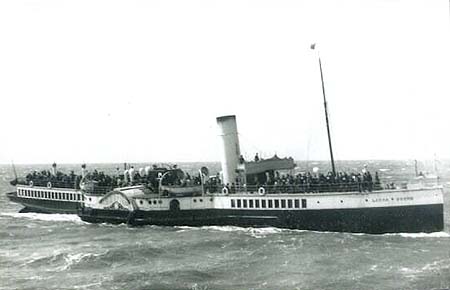
Lorna Doone
PS Lorna Doone was built for Edwards & Robertson’s Bristol Channel excursion business. Passed to John Gunn when the E & R operation was taken over after the 1895 season Chartered in the summer of 1896 to the Brighton, Worthing and South Coast Steamship Co John Gunn sold the vessel in March 1898 to the Southampton, Isle of Wight and South of England Royal Mail Steam Packet Co.
Lorna Doone spent World War II initially as a minesweeper, then as an anti-aircraft vessel, finally becoming an accommodation ship on the Clyde.
On October 14th 1948 she was taken to the Pollock, Brown yard at Northam for scrapping.
HMS Loyalty
- Type. Minesweeper
- Class. Algerine
- Pennant. J217
- Builder. Harland & Wolff
- Ordered. 15/11/1940
- Laid Down. 14/04/1931
- Launched. 09/12/1942
- Commissioned. 22/04/1943
- Fate. Sank 22/08/1944
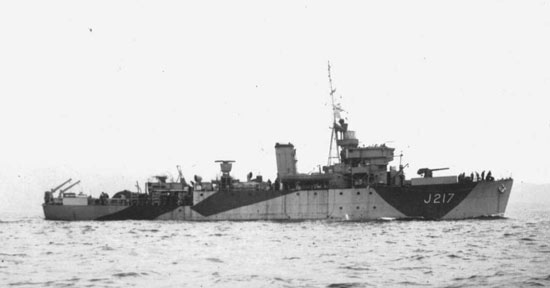
HMS Loyalty
HMS Loyalty was an Algerine-class minesweeper laid down as HMS Rattler on 14 April 1941 at Harland and Wolff, Belfast, and launched on 9 December 1942. She was commissioned on 22 April 1943, and renamed HMS Loyalty in June 1943. After commissioning she was assigned to the 18th Minesweeping Flotilla, joining them in June 1943. She and the other ships of the flotilla carried out sweeping operations in Lyme Bay and the English Channel. She and other ships of the flotilla were transferred to Harwich in August to sweep areas of the North Sea, but was soon transferred to the 9th Flotilla, at Dover. In November Loyalty transferred to Scapa Flow to join the 15th Minesweeping Flotilla with the Home Fleet. She transferred again in December to the Orkney and Shetland Command, operating out of Seidisfjord on anti-submarine patrols and local convoy escort duties. She remained here until being nominated to return to the UK in March 1944 and in April underwent a refit at Portsmouth, after which she was assigned to Force G to give minesweeping support to the allied landings in Normandy. Loyalty spent May carrying out exercises and rehearsals, and also escorted HMS Stormcloud into Portsmouth after she had been damaged by a mine. Loyalty then took part in the assault operations of 6 June, clearing Channel 6, and then remaining deployed off Gold Beach to cover operations. She remained off Normandy after the landings and throughout July, carrying out sweeps of the anchorages.
Loyalty was still off Normandy in August. She was returning to Portsmouth with the minesweepers HMS Ready, Hound, Hydra and Rattlesnake when the sweep wires parted. Loyalty and the minesweeping trawler Doon were dispatched to recover the sweep. As they were doing this Loyalty was attacked and sunk by the German U-boat U-480 she capsized in less than seven minutes, with the loss of her captain and 18 ratings. There were 30 survivors.
HMS Ludham
- Type. Minesweeper
- Class. Ham
- Pennant. M2708
- Builder. Fairlie Yacht
- Speed. 14 knots
- Ordered. 1954
- Laid Down. 1954
- Launched. 16/06/1954
- Commissioned. 1954
- Fate. Scrapped 1967
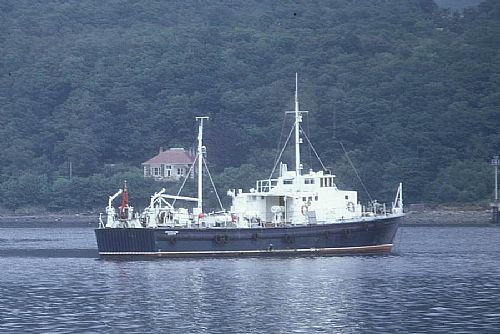
HMS Ludham
HMS Ludham was a Ham Class Minesweeper built by Fairlie Yacht Slip, and launched on Wednesday 16th June 1954.
HMS Lydd
- Type. Minesweeper
- Class. Hunt
- Pennant. J44
- Builder. Fairfield Shipbuilding
- Speed. 14 Knots
- Laid Down. 1918
- Launched. 04/12/1918
- Commissioned. 18/12/1919
- Fate. Sold 13/03/1947
-
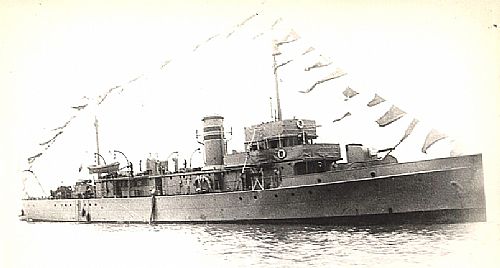
HMS Lydd
HMS Lydd was a Hunt Class Minesweeper built by Fairfield Shipbuilding & Engineering and launched on the 4th December 1918. History: 1940. February Passage to join 5th Minesweeping Flotilla at Harwich. 28th Took passage from Harwich to Dunkirk with ships of 4th and 5th Flotillas.
HMS Lydd was placed on the Disposal List after VJ Day and sold on 13th March 1947 to a Belgian shipping company, Dohmen and Habets of Liege, for use as a mercantile.
HMS Marmion
- Type. Minesweeper
- Class. Algerine
- Pennant. J381
- Builder. Port Arthur Shipbuilding
- Speed. 16.5 Knots
- Ordered. 1942
- Laid Down. 30/08/1943
- Launched. 15/06/1944
- Commissioned. 29/05/1945
- Fate. Scrapped 1959
-
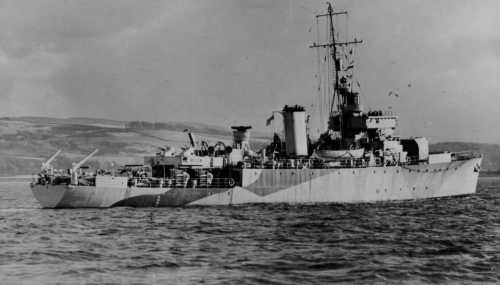
Algerine Class Minesweeper
HMS Marmion was built by Port Arthur Shipbuilding Co. Ontario, Canada and launched on the 15th June 1944; she was bombed and beached at Harwich by Luftwaffe aircraft and refloated on 10 May and eventually scrapped at Tilbury in 1959.
HMS Moon
- Type. Minesweeper
- Class. Algerine
- Pennant. J329
- Builder. Redfern Construction
- Speed. 16.5 Knots
- Ordered. 1942
- Laid Down. 23/03/1943
- Launched. 02/09/1943
- Commissioned. 06/07/1944
- Fate. Scrapped 13/11/1957
-
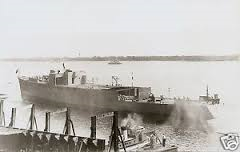
HMS Moon
HMS Moon was a Algerine class minesweeper launched by Redfern Construction on the 2nd September 1943. History: reserve fleet Harwich 1950.
HMS Mutine
- Type. Minesweeper
- Class. Algerine
- Pennant. J227
- Builder. Harland & Wolff
- Speed. 16.5 Knots
- Ordered. 15/11/1940
- Laid Down. 24/11/1941
- Launched. 10/10/1942
- Commissioned. 26/02/1943
- Fate. Scrapped 13/12/1966
-
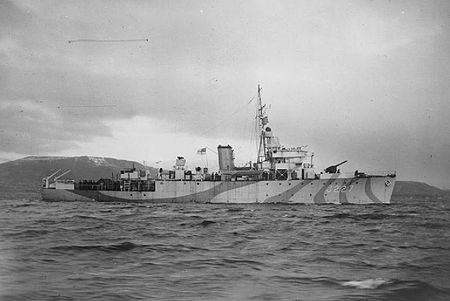
HMS Mutine
HMS Mutine was an Algerine-class minesweeper built by Harland and Wolff, in Belfast, and launched on 10 October 1942. After completing her working up trials she was assigned to the 12th Minesweeping Flotilla and was deployed in Home waters. Mutine remained in the Mediterranean sweeping mines until 1946, when she returned to the UK with the rest of her flotilla.She was paid off at Sheerness and reduced to the reserve, being laid up at Harwich. She was sold for scrapping on 13 December 1966.
HMS Nerissa
- Type. Minesweeper
- Class. Algerine
- Pennant. J456
- Builder. Redfern Construction
- Speed. 16.5 Knots
- Ordered. 15/03/1943
- Laid Down. 30/08/1944
- Launched. 25/11/1944
- Commissioned. 28/08/1945
- Fate. Scrapped 1960
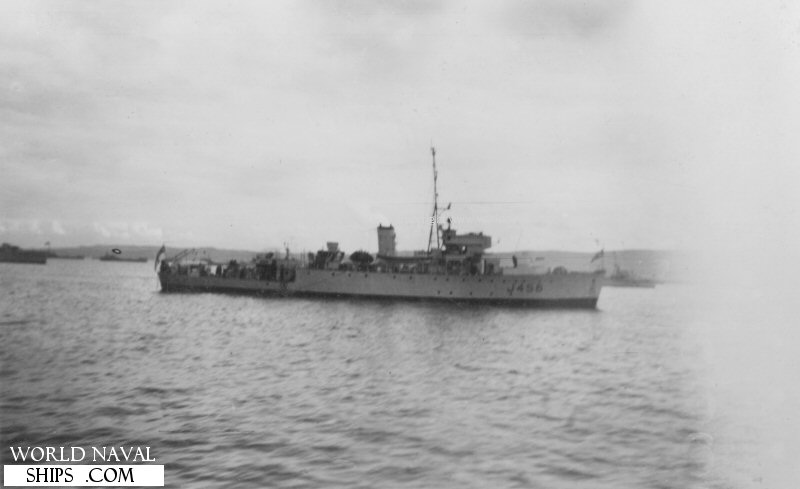
HMS Nerissa
HMS Nerissa was a Algerine class minesweeper launched on the 25th November 1944 by Redfern Construction Ltd, Toronto, Canada, and scrapped was in August 1960.
HMS Niger
- Type. Minesweeper
- Class. Halcyon
- Pennant. J73
- Builder. J.S. White & Co
- Speed. 17 knots
- Ordered. 05/02/1935
- Laid Down. 01/04/1935
- Launched. 29/01/1936
- Commissioned. 04/06/1936
- Fate. Sank 05/07/1942
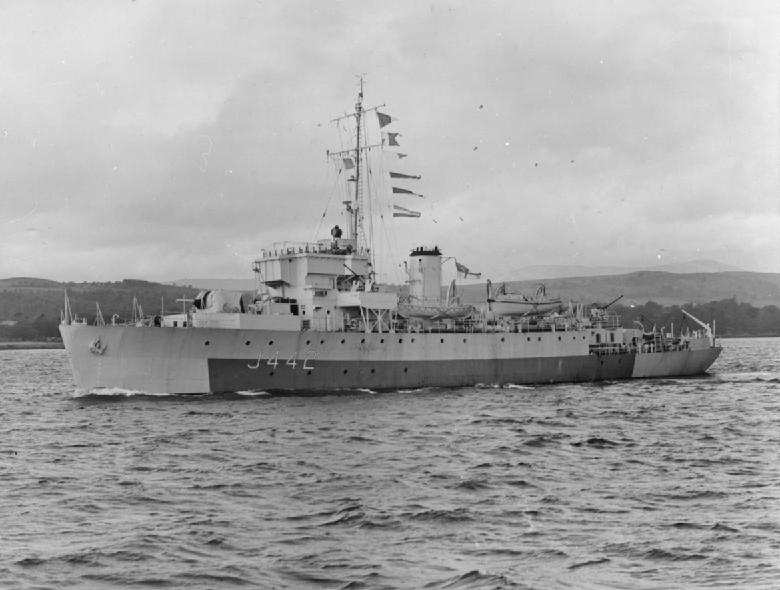
HMS Niger
HMS Niger was a Halcyon-class minesweeper of the Royal Navy. She was launched on the 29th January 1936 and was sunk during the Second World War. In fog on 5 July 1942 HMS Niger mistook an iceberg for Iceland’s North Western Cape and led six merchant ships of Murmansk to Reykjavík convoy QP 13 into Northern Barrage minefield SN72 laid one month earlier at the entrance to the Denmark Strait. There were no crewmen lost aboard the Soviet freighter Rodina , the Panamanian-flagged freighter Exterminator or the American freighter Hybert ; but 46 civilian crew and 9 Naval Armed Guards died aboard the American Liberty ship John Randolph and freighters Hefron and Massmar and there were only eight survivors of the 127 men aboard Niger. Only Exterminator could be salvaged. The value of the Northern Barrage was questioned following the accident.
HMS Onyx
- Type. Minesweeper
- Class. Algerine
- Pennant. J221
- Builder. Harland & Wolff
- Laid Down. 24/11/1941
- Launched. 27/10/1942
- Commissioned. 26/03/1943
- Fate. Scrapped 05/04/1967
-
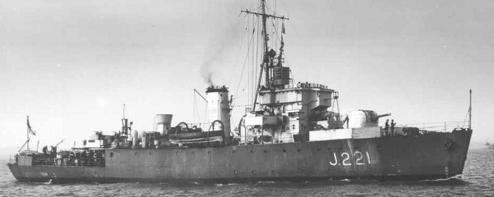
HMS Onyx
HMS Onyx was ordered on 15th November 1940 from Harland and Wolff, Belfast. Laid down on 24th November 1941 and was launched on 27th October 1942.
November 1943. November passage from Harwich to Scapa Flow.
October 1944. On release from Channel duties took passage to Harwich.
After VJ Day the ship remained with the Flotilla and after mine clearance off the East Coast of UK refitted at Devonport in September 1945. On completion she was deployed in Plymouth Command for similar duties in SW Approaches and the Bristol Channel. In March 1947 she was transferred to the 3rd Flotilla based at Port Edgar on the Forth until August that year when she Paid-off and was reduced to Reserve status. Initially laid-up at Portsmouth the ship was moved to the Reserve Fleet Plymouth where she remained until placed on the Disposal List in 1966. Sold to Bisco for breaking-up by TW Ward this minesweeper arrived in tow at Inverkeithing, near Rosyth on 5th April 1967.
HMS Pangbourne
- Type. Minesweeper
- Class. Hunt
- Pennant. J37
- Builder. Lobnitz & Co
- Speed. 14 Knots
- Laid Down. 1912
- Launched. 26/03/1918
- Commissioned. 08/05/1918
- Fate. Scrapped 13/03/1947
-

HMS Pangbourne
HMS Pangbourne was a Hunt class Minesweeper built by Lobnitz & Co. Ltd. Renfrew, Scotland and launched on the 26th March 1918.
HMS Peterhead
- Type. Minesweeper
- Class. Bangor
- Pennant. J59
- Builder. Blyth Shipbuilding
- Speed. 16 knots
- Laid Down. 14/02/1940
- Launched. 31/10/1940
- Commissioned. 11/09/1941
- Fate. Scrapped 1948

HMS Peterhead
HMS Peterhead was a Bangor class minesweeper of the Royal Navy. She was built by Blyth Shipbuilding Company, of Blyth, Northumberland and launched on 31 October 1940. She took part in Operation Neptune, the assault phase of the invasion of Normandy and was mined off Utah Beach on 8 June 1944. Peterhead was declared a total loss, and was sold for scrapping on 1 January 1948. she was broken up at Hayes of Pembroke in May 1948.
HMS Pickle
- Type. Minesweeper
- Class. Algerine
- Pennant. J293
- Builder. Blyth Shipbuilding
- Laid Down. 11/01/1943
- Launched. 03/08/1943
- Commissioned. 15/10/1943
- Fate. Scrapped 1964
-
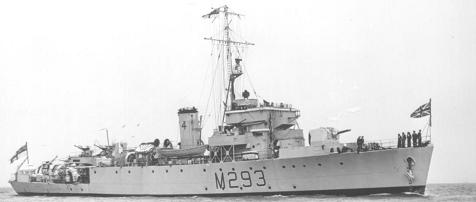
HMS Pickle
HMS Pickle was ordered on 30th April 1942 from Harland and Wolff, Belfast and laid down on 11th January 1943, launched on 3rd August 1943.
January 1944. Took passage to Harwich.
February Deployed at Harwich for North Sea minesweeping duties.
October 16th Passage to Harwich.
HMS Pickle was initially laid-up at Plymouth but transferred to Harwich in April 1951. When the Harwich Division of the Reserve Fleet was closed the ship was towed to Portsmouth and remained in Reserve. As part of the reduction in the Reserve Fleet following the Defence Review in 1957 she was placed on the Disposal List and sold to the Singalese Navy in July 1958. After tow to Devonport for docking and essential repair the ship was handed over on 18th August that year and renamed Parakrama. On completion she was sailed to Ceylon with a Singalese crew and remained in service until 1964 when sold for demolition in Hong Kong.
HMS Pincher
- Type. Minesweeper
- Class. Algerine
- Pennant. J294
- Builder. Harland & Wolff
- Laid Down. 11/01/1943
- Launched. 19/08/1943
- Commissioned. 12/11/1943
- Fate. Scrapped 07/03/1962
-
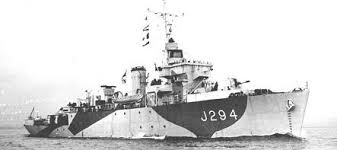
HMS Pincher
HMS Pincher was a Algerine-Class Fleet Minesweeper fitted with Turbine propulsion machinery ordered on 30th April 1942 from Harland and Wolff, Belfast. Laid down on 11th January 1943 she was launched on 19th August 1943. Pincher remained in the Far East with the Flotilla for minesweeping operations to ensure safe passage of shipping into ports in the area. She returned to UK with the remaining ships of the Flotilla in July 1946, Paid off in September for reduction to Reserve this ship was laid-up at Harwich. In 1951 she recommissioned for service in the 4th Minesweeping Squadron based at Portland and during 1953 joined the Fisheries Protection Squadron. Following a refit in 1955 she resumed Fishery Protection duties including service off Iceland. Paid-off again in 1955 she laid-up at Chatham before being moved to Portsmouth in 1956. After being placed on the disposal List in 1960 she was hulked and used as a Fender until sold to Bisco for demolition by Clayton and Davie at Dunston where she arrived in tow at the Breaker’s yard on 7th March 1962.
HMS Plover
- Type. Minelayer
- Class. Plover
- Pennant. M26
- Builder. William Denny
- Speed. 14.75 knots
- Ordered. 21/07/1936
- Laid Down. 07/10/1936
- Launched. 08/06/1937
- Commissioned. 27/09/1937
- Fate. Scrapped 1969
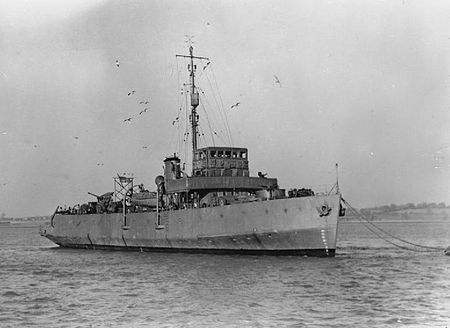
HMS Plover
HMS Plover was a Plover class coastal minelayer launched on the 8th June 1937 by William Denny and was intended to conduct mining trials and was therefore fitted to recover as well as lay mines. During World War II she laid a total of 15,237 mines, including two that sank the German destroyer Z8 Bruno Heinemann off the Belgian coast in January 1942. She was sold to T. W. Ward in 1969. Plover arrived at their yard in Inverkeithing, Scotland in April 1969 to begin scrapping.
HMS Polruan
- Type. Minesweeper
- Class. Bangor
- Pennant. J97
- Builder. Ailsa Shipbuilding
- Ordered. 21/07/1939
- Laid Down. 06/11/1939
- Launched. 18/07/1940
- Commissioned. 09/05/1941
- Fate. Scrapped 1950
-
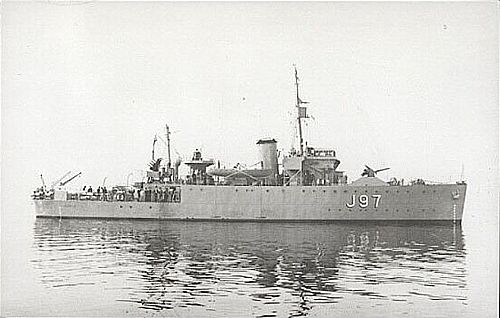
HMS Polruan
HMS Polruan was ordered on 21st July 1939 from Ailsa Shipbuilding Co and laid down at Troon, Ayrshire on 6th November 1939. She was launched 18th July 1940 and build was completed on 9th May 1941.
History:
July 1941 Joined Minesweepers Clacton, Felixstowe, Stornoway, Eastbourne, Blyth and Ilfracombe in North Sea.
November. On completion of QO resumed Channel minesweeping at Harwich
December. Harwich deployment in continuation.
1942 July. Transferred to Harwich for further service in North Sea.
HMS Polruan was placed on the Disposal List in 1949 and sold to BISCO in 1950 for demolition by T Young at Sunderland. In June 1950 the ship was taken in tow to the Tyne and handed over to the ship breaker.
PS Princess Elizabeth
- Type. Paddle Minesweeper
- Class. None
- Pennant.
- Builder. Day Summers & Co
- Ordered. 1926
- Laid Down. 1927
- Launched. 02/06/1927
- Commissioned. 1939
- Fate. Restaurant
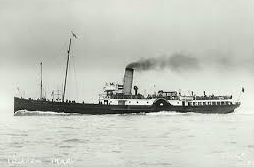
PS Princess Elizabeth
During the Second World War she was requisitioned by the Admiralty and was converted for use as a minesweeper. She made four trips to Dunkirk in May 1940 rescuing many British troops. In 1942 she became an anti-aircraft vessel. After returning to her owners, she was converted from coal to oil burning and returned to service as a Ryde excursion steamer. From 1953 she became a standby steamer as she was considered too small and able to carry only a few cars on her foredeck. Princess Elizabeth was sold in 1959 to Torbay Steamers Ltd. In 1962 she ran from Bournemouth again and was transferred to Weymouth for the final few years of her operational career. in 1967 was sold again for scrap. Her engines and equipment were removed in 1967. After two or three more abortive sales she was moved to the London Embankment for use as a restaurant. She was later moored at Paris and she is now moored at Dunkirk and in use as a restaurant.
PS Queen Empress
- Type. Paddle Minesweeper
- Class. None
- Pennant. R399
- Builder. Murdoch & Murray
- Ordered.
- Laid Down. 1911
- Launched. 20/04/1912
- Commissioned. 1912
- Fate. Scrapped 1946
-
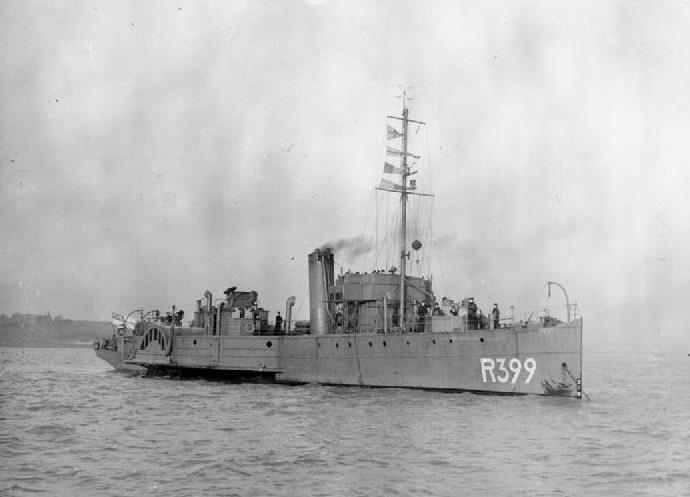
Ps Queen Empress
Queen Empress served during the Great War as a troop transport running out of Southampton, then later as a minesweeper based on the Tyne. She remained in Admiralty service after the end of the war, as an ambulance transport ship at Archangel. She returned to Clyde service in 1920, on Glasgow-Rothesay, and Glasgow~Lochgoilhead sailings, together with a few sailings to Campbeltown each autumn. Following the takeover of Williamson Buchanan by the LMS in October 1935, she received two gold bands round her hull, and silver vents, but retained her white funnel, although she was used for railway connection sailings. In March 1938 that too was painted in standard LMS colours. She was requisitioned again in October 1939, becoming the flagship of the 12th Minesweeping Flotilla at Portsmouth. Her war record included bringing down two German aircraft. At the end of the war, she was in poor condition, and beyond being worth reconditioning.
She was sold to Dutch Shipbreakers and scrapped at Nieuw Lekkerland in August 1946.
HMS Ready
- Type. Minesweeper
- Class. Algerine
- Pennant. J223
- Builder. Harland & Wolff
- Speed. 16.5 Knots
- Ordered. 30/04/1942
- Laid Down, 11/01/1943
- Launched. 11/01/1943
- Commissioned. 12/11/1943
- Fate. Scrapped 07/03/1962
HMS Ready was an Algerine class minesweeper launched 11th January 1943 by Harland & Wolff, Belfast. Sold to the Belgian Navy on 4 July 1951 and renamed J.E. van Haverbeke. Scrapped at Brugge, Belgium on the 7th March 1962.
HMS Recruit
- Type. Minesweeper
- Class. Algerine
- Pennant. J298
- Builder. Harland & Wolff
- Speed. 16.5 Knots
- Ordered. 30/10/1942
- Laid Down. 20/04/1943
- Launched. 26/10/1943
- Commissioned. 14/01/1944
- Fate. Scrapped 1965

Algerine Class Minesweeper
HMS Recruit was an Algerine class Minesweeper built by Harland & Wolff, Belfast and launched on the 26th of October 1943. History: 1944. Passage to Harwich to join HM Minesweepers for operational minesweeping duties as 7th Flotilla. HMS Recruit remained in the Far East with the Flotilla for minesweeping operations to ensure safe passage of shipping into ports in the area. After deployments off Penang, in the Banka Straits, off Malaya, Burma and North Borneo she returned to UK with the six original sister ships of the Flotilla in August 1946. Paid off in September she recommissioned in 1947 and during subsequent service was deployed in the Mediterranean for a year before return to UK to Pay-off. Taken out of Reserve in 1953 she again joined the 2nd Flotilla in Malta until nominated for reduction to Reserve Status. Laid-up at Barrow this ship was placed on the Disposal List and sold to Bisco for breaking-up at Barrow by TW Ward in September 1965.
HMS Ross
- Type. Minesweeper
- Class. Hunt
- Pennant. J456
- Builder. Lobnitz & Co
- Speed. 16 knots
- Laid Down. 1919
- Launched. 12/06/1919
- Commissioned. 27/08/1919
- Fate. Scrapped 13/03/1947
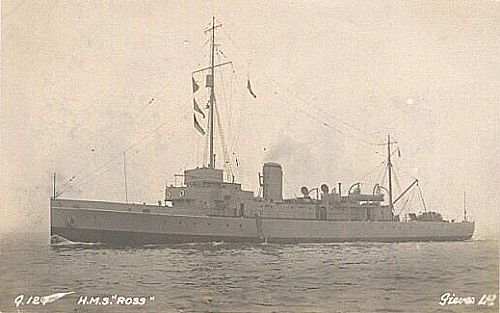
HMS Ross
HMS Ross was a Hunt class minesweeper, built by Lobnitz and launched on 12 June 1919. She was originally called HMS Ramsey, but was renamed prior to launch. In 1940, Ross was serving with the 5th Minesweeping Flotilla. With the rest of her flotilla, she took part in Operation Dynamo, the evacuation of the British Expeditionary Force from Dunkirk, making a number of trips and taking off more than 1,000 men. In 1941, Ross had a narrow escape when attacked by a German bomber a few miles out of Aberdeen: a bomb passed through her bow without exploding, leaving its tail fin behind. In 1941 she was decommissioned in 1945. Ross was then finally sold for scrap on 13 March 1947.
HMS Rhyl
- Type. Minesweeper
- Class. Bangor
- Pennant. J36
- Builder. Lobnitz & Co
- Speed. 16 Knots
- Ordered. 28/09/1939
- Laid Down. 23/11/1939
- Launched. 21/06/1940
- Commissioned. 09/11/1940
- Fate. Scrapped 1948
-
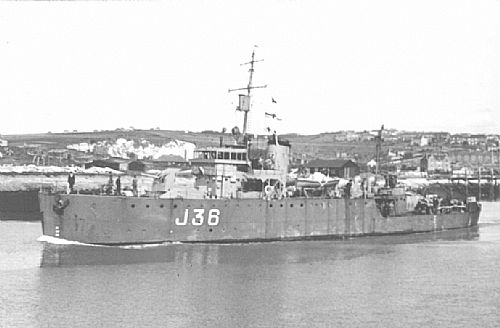
HMS Rhyl
HMS Rhyl was a Bangor Class Minesweeper built by Lobnitz & Co. Ltd, Renfrew, Scotland) and launched on the 21st June 1940. sold 28 September 1948 and scrapped at Gateshead the following month.
HMS Romney
- Type. Minesweeper
- Class. Bangor
- Pennant. J77
- Builder. Lobnitz
- Speed. 16 Knots
- Ordered. 28/08/1939
- Laid Down. 27/02/1940
- Launched. 03/08/1940
- Commissioned. 12/12/1940
- Fate. Scrapped 18/01/1950
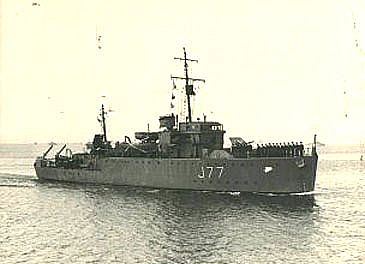
HMS Romney
HMS Romney was a Bangor class minesweeper built by Lobnitz & Co. Ltd. Renfrew, Scotland and launched on the 3rd August 1940.
HMS Salamander
- Type. Minesweeper
- Class. Halcyon
- Pennant. J86
- Builder. J.S. White
- Speed. 16.5 Knots
- Ordered. 05/02/1935
- Laid Down. 18/04/1935
- Launched. 24/03/1936
- Commissioned. 18/07/1936
- Fate. Scrapped 1947

HMS Salamander
HMS Salamander was built by J. S. White, Cowes. She was laid down on 18th April 1935 and launched 24 March 1936. On 9 August she was temporarily allocated to the Reserve Fleet for the Royal Inspection at Spithead. With effect from 21 August she was transferred to the 6th M/S Flotilla. On 3 Sept 1939 the war started and Salamander was ordered to ‘proceed to Dover forthwith’.
History: 1940. September Harwich deployed for mine clearance in North Sea.
In April 1940 she was allocated to the 4th Minesweeping Flotilla, Nore Command, and in May took part in a minesweeping operation off the coast of Holland until the Dutch capitulation. She was one of many ships employed in the evacuation of the British Expeditionary Force from Dunkirk and from 26th May to 1st June, took off a total of over 1100 troops in three trips. On the latter date, while rescuing survivors from another ship which had been set on fire, she was subjected to air attacks which damaged her engine room, but she managed to raise steam for slow speed and arrived at Dover on one boiler and disembarked 479 troops.
Minesweepers continued ceaselessly and on 27th August the 1st Minesweeping Flotilla was working off Le Havre. By a tragic mistake, Salamander was attacked by British Typhoon aircraft, was severely damaged and had to be towed to safety. She was placed in Reserve but being beyond economical repair, was scrapped at Blyth in May 1947.
HMS Saltash
- Type. Minesweeper
- Class. Hunt
- Pennant. J62
- Builder. Murdoch & Murray
- Speed. 16 Knots
- Ordered. 1917
- Laid Down. 05/09/1917
- Launched. 25/06/1918
- Commissioned. 31/01/1918
- Fate. Scrapped 1947
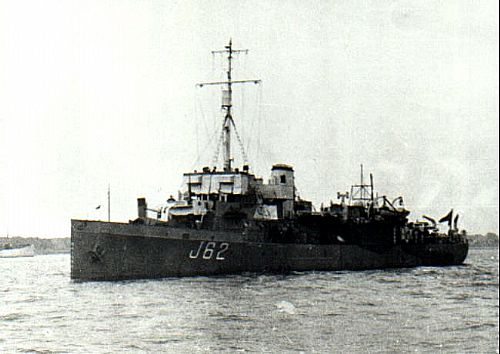
HMS Saltash
HMS Saltash was built by Murdoch and Murray of Port Glasgow, launched 25 June 1918 and served through the last few months of World War I as well as through all of World War II.
History:
1939 December. Deployed at Harwich for minesweeping off East Coast.
1940 January. Deployed at Harwich to ensure convoy routes off East Coast were kept clear of mines.
May. Transferred to 4th Minesweeping Flotilla at Harwich for special duty after German attacks on Low Countries.
25th May. After clearance operation completed took passage to return to Harwich.
HMS Saltash remained in Reserve at Falmouth until 1947 when she was placed on the Disposal List. The ship was sold to Dohmen and Habets of Ghent in July 1947 and towed to Belgium for Demolition.
HMS Seabear
- Type. Minesweeper
- Class. Algerine
- Pennant. J333
- Builder. Redfern Construction
- Speed. 16.5 Knots
- Ordered. 1942
- Laid Down. 12/07/1942
- Launched. 06/11/1943
- Commissioned. 22/06/1944
- Fate. Scrapped 12/12/1958

HMS Seabear
HMS Seabear was an Algerine-class minesweeper launched at Redfern Construction, Ontario, Canada on 6 November 1943. The ship was originally to have been named HMS St Thomas but was renamed in 1943. It arrived at Preston for breaking up on 12 December 1958.
HMS Seagull
- Type. Minesweeper
- Class. Halcyon
- Pennant. J85
- Builder. Devonport
- Speed. 17 knots
- Ordered. 1936
- Laid Down. 15/02/1937
- Launched. 28/10/1937
- Commissioned. 30/05/1938
- Fate. Scrapped 1956
-

HMS Seagull
HMS Seagull was a Halcyon-class minesweeper; she was launched on the 28th October 1937 by Devonport Dockyard. During the Second World War she helped escort 21 Arctic convoys, and participated in Operation Neptune. She was also involved in the accidental sinking the Polish submarine ORP Jastrząb, along with HNoMS St Albans, during the passage of Arctic Convoy PQ 15. Five crewmen were killed. A court of Enquiry found that Jastrząb was 100 nautical miles (190 km) out of position, in an area where U-boats were expected to operate, and no blame could be attached to either commander. However, other sources maintain the convoy changed its course and entered Jastrząb’s patrol sector. Also that the Allied ships ignored identification marks, while on surface, and that Seagull’s commander was later found guilty by the Admiralty. In late 1945 she was converted in Rotterdam to a Survey Ship. Until 1950 she operated in home waters, after which she was paid off into the reserve. She became the naval drill ship at Leith in 1955 before being scrapped by Demmelweek and Redding in Plymouth in 1956.
HMS Selkirk
- Type. Minesweeper
- Class. Hunt
- Pennant. J18
- Builder. Murdoch & Murray
- Speed. 16 Knots
- Ordered. 1917
- Laid Down. 05/03/1918
- Launched. 02/12/1918
- Commissioned. 17/03/1919
- Fate. Scrapped 17/05/1957
-
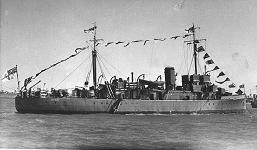
HMS Selkirk
HMS Selkirk was ordered from Murdoch and Murray in 1916 and laid down on 5th March 1918. The ship was launched on 2nd December 1918.
History:
1940 January- February Transferred to Harwich in continuation of requirement.
April. East Coast deployment in continuation based at Harwich.
June. Resumed deployment at Harwich
October 10th. Resumed Flotilla duties at Harwich.
November – December. East coast minesweeping duties based at Harwich.
1941 January – March. East coast minesweeping with Flotilla based at Harwich.
HMS Selkirk remained in Reserve until 1946 when she was placed on the Disposal List. The ship was sold to Dohmen and Habets of Ghent on 17th May 1947 and towed to Belgium for Demolition.
HMS Sharpshooter
- Type. Minesweeper
- Class. Halcyon
- Pennant. J68
- Builder. Devonport Dockyard
- Speed. 16.5 Knots
- Ordered. 02/03/1936
- Laid Down. 08/06/1936
- Launched. 10/12/1936
- Commissioned. 17/12/1937
- Fate. Scrapped 1960

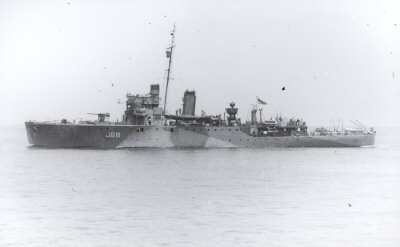
HMS Sharpshooter
HMS Sharpshooter was ordered from HM Dockyard Devonport on 2nd March 1936 with sister ship to be named HMS Hesbe. laid down on 8th June 1936 and was launched on 10th December that year. Build was completed on 17th December 1937 and she commissioned for service in the 1st Minesweeping Flotilla based at Portland.
1941 – March. Transferred with flotilla to Harwich for clearance of convoy routes.
HMS Sidmouth
- Type. Minesweeper
- Class. Bangor
- Pennant. J47
- Builder. Henry Robb
- Speed. 16 Knots
- Ordered. 28/08/1939
- Laid Down. 11/07/1940
- Launched. 15/03/1041
- Commissioned. 04/08/1941
- Fate. Scrapped 18/01/1950
-

HMS Sidmouth
HMS Sidmouth was a Bangor Class Minesweeper built by Henry Robb Ltd, Leith and launched on the 15th March 1941.
HMS Skipjack
- Type. Minesweeper
- Class. Halcyon
- Pennant. J38
- Builder. John Brown
- Speed. 16.5 Knots
- Ordered. 03/11/1932
- Laid Down. 04/04/1933
- Launched. 18/01/1934
- Commissioned. 03/05/1935
- Fate. Sank 01/06/1940
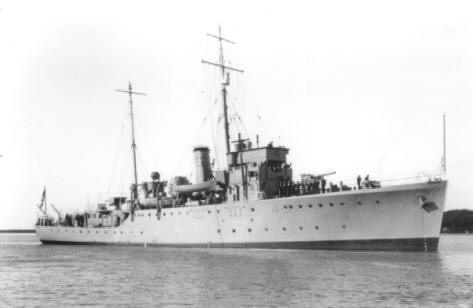
HMS Skipjack
HMS Skipjack was laid down on 4th April 1933 at John Brown Clydebank and commissioned on 3rd May 1935. She joined the 1st Minesweeping Flotilla and sailed to Alexandria, returning to Portland in April 1936. She then carried out the usual range of exercises until entering the Nore Reserve in April 1938. In September 1938 she commissioned with a full active service crew because of the International situation, returning to her former status on 29th October 1938. She again recommissioned on 15th June 1939 and joined the 5th Minesweeping Flotilla operating from Harwich and Grimsby for the first few months of the war.
On 3rd Feb 1940, while sweeping with her two sister ships Sphinx and Speedwell, three enemy aircraft attacked the flotilla. Three separate attacks were made on Skipjack, the first and last from aft and the second from ahead, with intervals of about five minutes between attacks. In the first attack two bombs were dropped, one large and one small, both missed on either quarter at about 10 feet distance. In the second attack one small bomb was dropped which missed about 30 feet on the starboard bow. Each attack on Skipjack was accompanied by intense machine gun fire, the ship being repeatedly hit though no casualties were sustained. Sphinx was badly damaged and despite several attempts to tow her to port her later sank.
On 1st June she was off Dunkirk and was subjected to repeated air attacks. By 0844, 275 troops had boarded when ten Ju88’s attacked Skipjack and she was hit by two bombs. She lost way and developed a heavy list to port. Another three bombs hit the ship and at 0849 she turned turtle, remaining afloat for about 20 minutes. Survivors in the water were attacked by enemy aircraft. The majority of the troops were trapped in the hull. Nineteen crew and 275 troops were killed.
HMS Snipe
- Type. Minesweeper
- Class. Ton
- Pennant. M1102
- Builder. Thornycroft
- Speed. 15 Knots
- Ordered. 1952
- Laid Down. 1952
- Launched. 04/09/1952
- Commissioned. 1952
- Fate. 03/06/1983
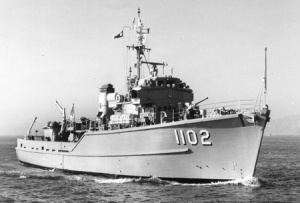
HMS Snipe
HMS Snipe was a Ton class minesweeper which served in the Royal Navy and Royal Australian Navy . The ship was constructed by John I. Thornycroft and Company at Southampton and launched on 4 September 1952. The ship was completed on 16 December 1952, and commissioned in the Royal Navy as HMS Alcaston, being allocated the pennant number M.1102. Alcaston served with the 104th Mine Sweeping Squadron, and in November 1956 took part in Operation Musketeer, the Anglo-French attack on the Suez Canal. In 1961 she was sold to Australia along with five other Ton-class minesweepers. Snipe remained in RN service until her decommissioning on 3 June 1983.
HMS Speedy
- Type. Minesweeper
- Class. Halcyon
- Pennant. J17
- Builder. William Hamilton
- Speed. 17 knots
- Ordered. 26/08/1937
- Laid Down. 01/12/1937
- Launched. 23/11/1938
- Commissioned. 07/04/1939
- Fate. Scrapped 05/11/1946
-
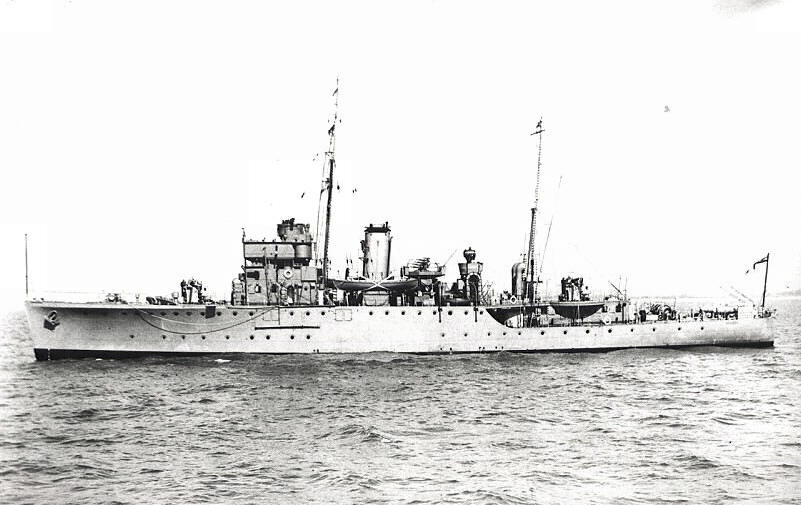
HMS Speedy
HMS Speedy was completed in April 1939. At the outbreak of the Second World War she was at Scapa with the Home Fleet, and was employed in home and northern waters during the first two and a half years of hostilities. In October 1941, she assisted in escorting one of the first convoys to Archangel, North Russia. The convoy arrived without loss. Based in Murmansk, she then took part in various minesweeping and anti-submarine operations in North Russian waters until January 1942. On the night of 17 December 1941, while engaged on an anti‑submarine sweep in company with Hazard she was attacked by four large German destroyers 14 miles North‑by‑East of Cape Gorodetski. Although hit, she managed to make off in poor visibility. Speedy arrived at Scapa on 14 January 1942, proceeding thereafter for repairs and a refit in a London shipyard. In April, she escorted another Russian convoy , but on the 12th was damaged by ice and was repaired at Immingham.
HMS Speedwell
- Type. Minesweeper
- Class. Halcyon
- Pennant. J87
- Builder. William Hamilton
- Ordered. 02/03/1934
- Laid Down. 20/06/1934
- Launched. 21/03/1935
- Commissioned. 30/09/1935
- Fate. Scrapped 1954
-
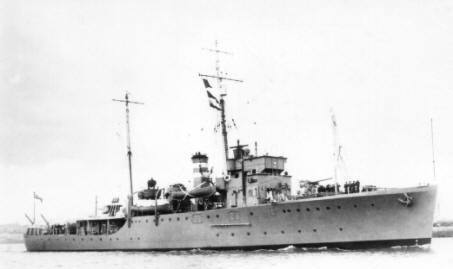
HMS Speedwell
HMS Speedwell was completed on 30 September 1935 and joined the 1st Minesweeping Flotilla, attached to the Mediterranean Fleet, and was based at Alexandria. She returned to Devonport for a refit which was completed at the end of June. She stayed in home waters undergoing a further refit at Devonport in early 1937 until July of 1937, when she left for the Mediterranean. Returning to the UK at the end of 1937.
For the remainder of the war Speedwell continued to carry out minesweeping duties between Harwich and the Continent, latterly clearing the route to Hamburg and in the Heligoland Bight. At the end of 1945 she was reduced to the reserve at Chatham and laid up at Harwich. On 5 December 1946 she was sold and became the merchant vessel Topaz. Whilst en route to the Dutch ship breakers on 11 May 1954, she was wrecked and later scrapped at Dordrecht.
HMS Stornoway
- Type. Minesweeper
- Class. Bangor
- Pennant. J31
- Builder. Henry Robb
- Speed. 16 knots
- Ordered. 28/08/1939
- Laid Down. 17/07/1940
- Launched. 10/07/1941
- Commissioned. 17/11/1941
- Fate. Sold 11/09/1946
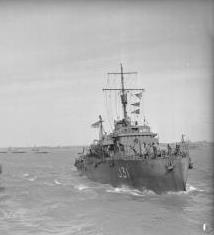
HMS Stornoway
HMS Stornoway was a Bangor class minesweeper built by Henry Robb Ltd., Leith, Edinburgh in 1940/41. She was commissioned into the Royal Navy on 17th November 1941; The ship was initially attached to the Harwich minesweeping flotilla between 1941 and 1942, and was then sent to the Mediterranean. Her operational record went throughout the Second World War, until being deemed as surplus to requirements, she was sold to Egypt on 11th September 1946, becoming the ‘Matruh’.
HMS Sutton
- Type. Minesweeper
- Class. Hunt
- Pennant. J78
- Builder. A. McMillan & Sons
- Speed. 16 knots
- Ordered. 1917
- Launched. 08/05/1918
- Commissioned. 23/08/1918
- Fate. Scrapped 1947
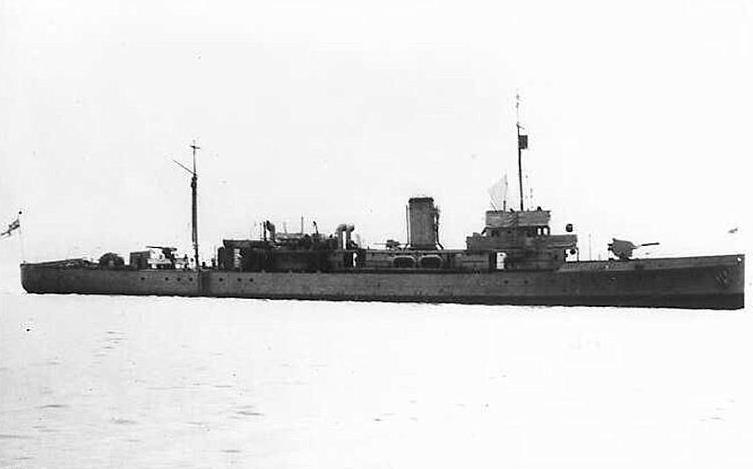
HMS Sutton
HMS Sutton was a Hunt Class Minesweeper built by A. McMillan & Sons, Dundee and launched on the 8th May 1918. Machinery was supplied by Yarrow of Scotstoun. Her build was completed on 23rd August 1918. After WW1 this ship was deployed for mine clearance work but later was placed in Reserve at Alexandria. History: 1939 December. Deployed at Harwich for minesweeping off East Coast.
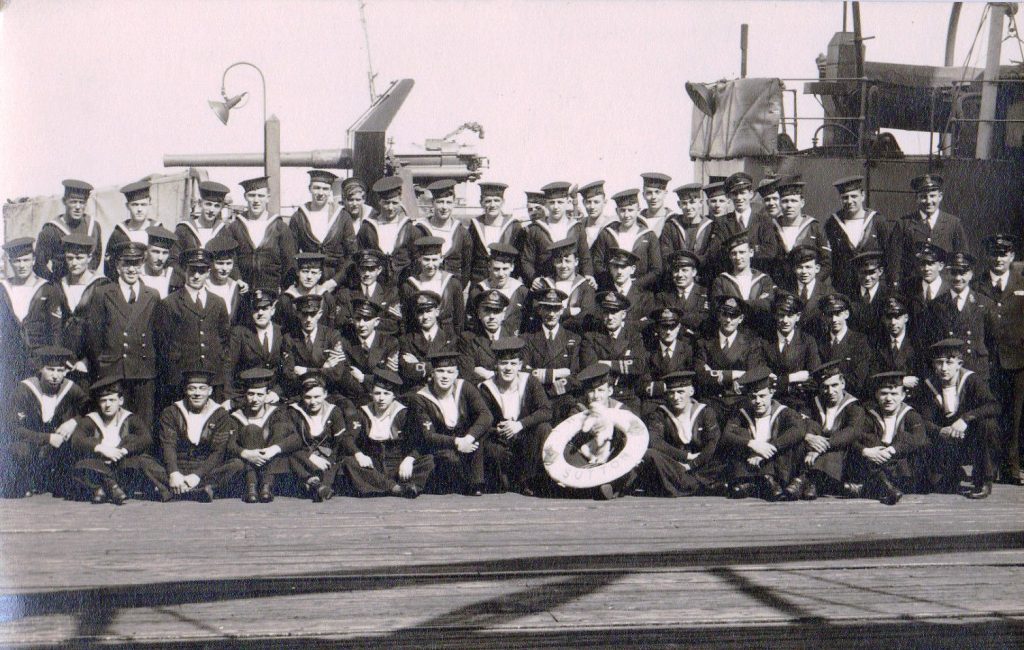
H.M.S Sutton
1940 January – February Deployed at Harwich to ensure convoy routes off East Coast were kept clear of mines.
1941 January – March East coast minesweeping with Flotilla based at Harwich in continuation.
Sutton remained in Reserve until 1946 when she was placed on the Disposal List. The ship was sold to Dohmen and Habets of Ghent in July 1947 and towed to Belgium for Demolition.
My father-Charles Thomas Pearce- joined the Royal Navy Nov 1923. He joined the submarine Service 1927 leaving in 1939 when he was posted to H.M.S. Sutton, then involved in the Palestine campaign. Sutton was then converted for minesweeping duties remaining in this role throughout WW2 She gained Battle Honours at the Dunkirk evacuation and for helping to sweep the channel for the invasion craft at the Normandy landings. She swept.for Russian convoys as far as the Faroe Islands and Iceland.( she was a “Smokey Joe”, a coal burner.She was part of the 4th minesweeping flotilla based at Harwich. At the wars end Sutton was paid off and scrapped in 1947 in ,I think, Belgium. Dad joined H M S Berwick (a cruiser) infeb 1944 until Nov 1945. when he finished his time in the Royal Navy after 22 years. Having researched the history of H M S Sutton, He was one of the “lucky ones” . Brian Pearce.
HMS Tring
- Type. Minesweeper
- Class. Aberdare
- Pennant.
- Builder. William Simons
- Speed. Knots
- Ordered. 1917
- Laid Down. 1918
- Launched. 23/08/1918
- Commissioned.
- Fate. Scrapped 07/11/1927

HMS Tring
Laid down as HMS Teignmouth but the name was in changed in June 1918 before launch. arrived Charlestown 17/11/1927 for scrapping.
We are adding more information to this site on a regular basis, if you wish to submit any photos or provide any information on naval vessels that were based or visited Harwich, then please use the contact page at the bottom of the screen.
Copyright Ownership.
We attempted to get the consent of copyright holders to use this material for nearly all of the photographs on the website.
In the few cases where names are available, a thorough search was made using telephone directories, photographic copyright directories, People Search and Google Area Search. None of the copyright owners could be traced in this way and we believe we have exhausted all reasonable avenues.
The consensus opinion of these authorities was that if any two of the following situations applied we would be deemed to have taken sufficient action to avoid infringing copyright laws:
- Reasonable efforts made to contact the copyright holder
- No financial gain will be made in relation to the photos
- A letter is obtained from present owner of photos
- There is a proviso included stating that if offence is caused document will be removed
The website owner undertakes to remove any photograph from the website where offence is caused. All the above conditions have therefore been met.
← Other Vessels – World War 1 Minesweepers & Trawlers – World War 1 →
